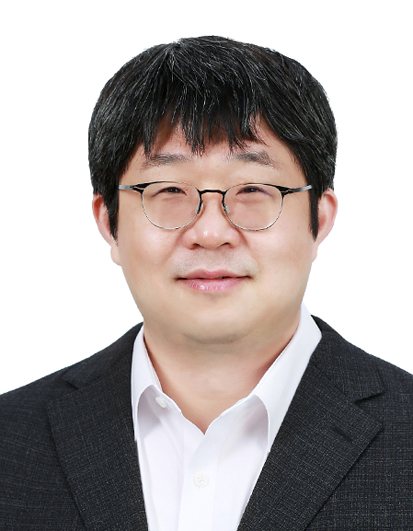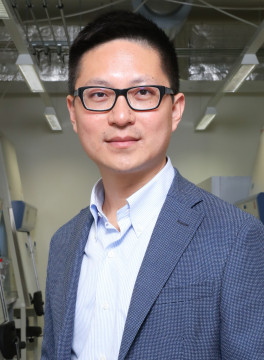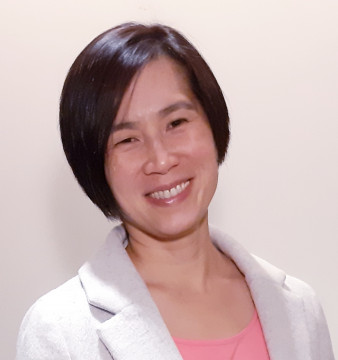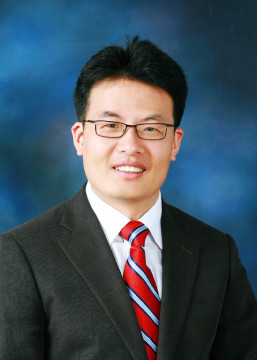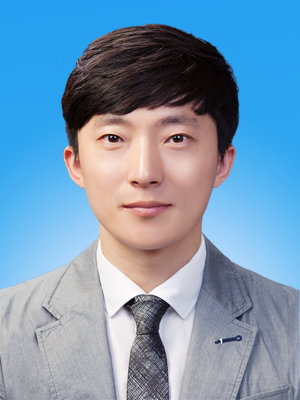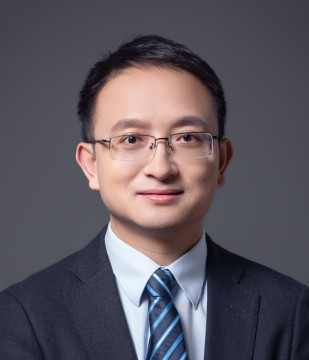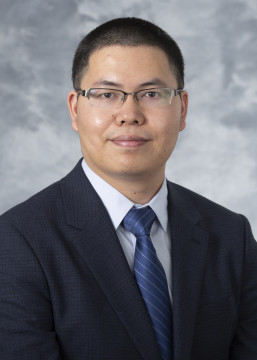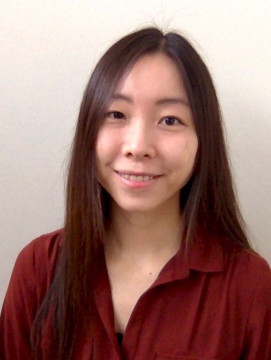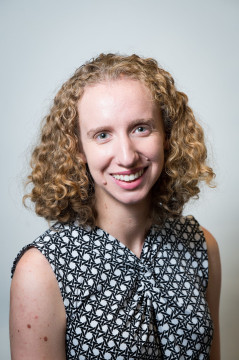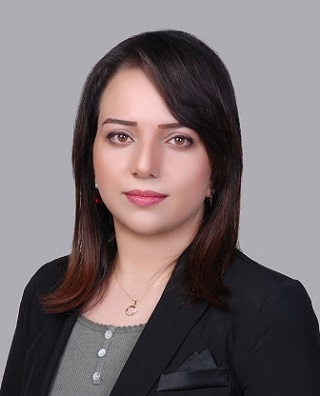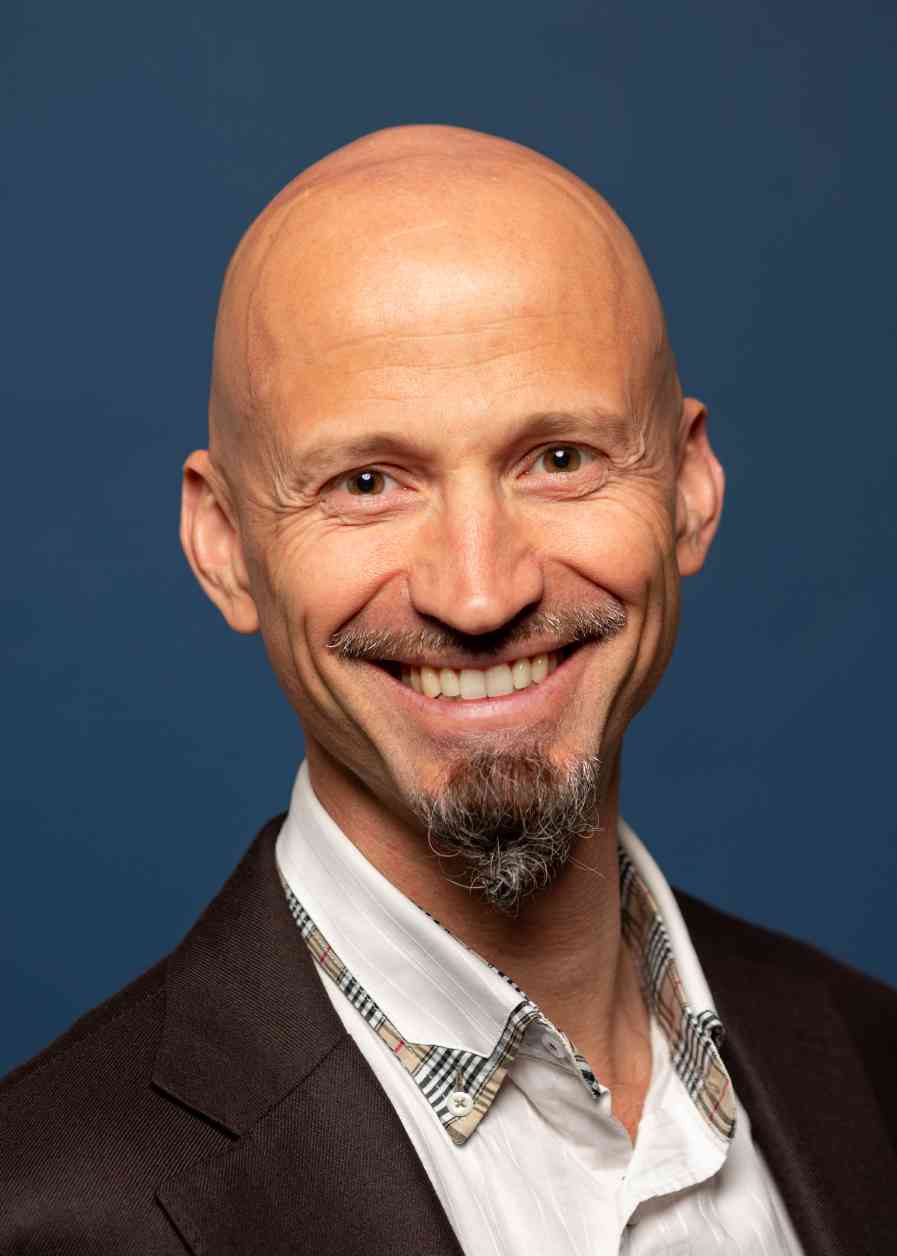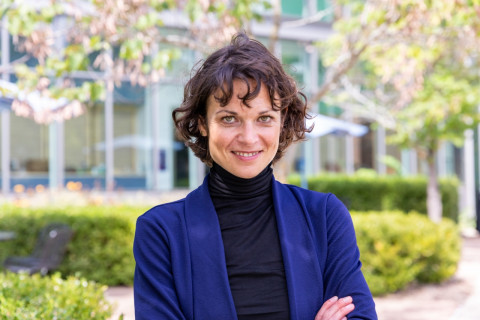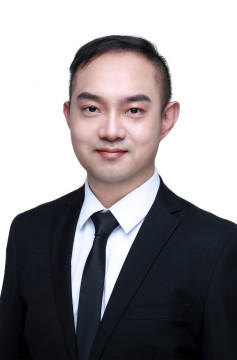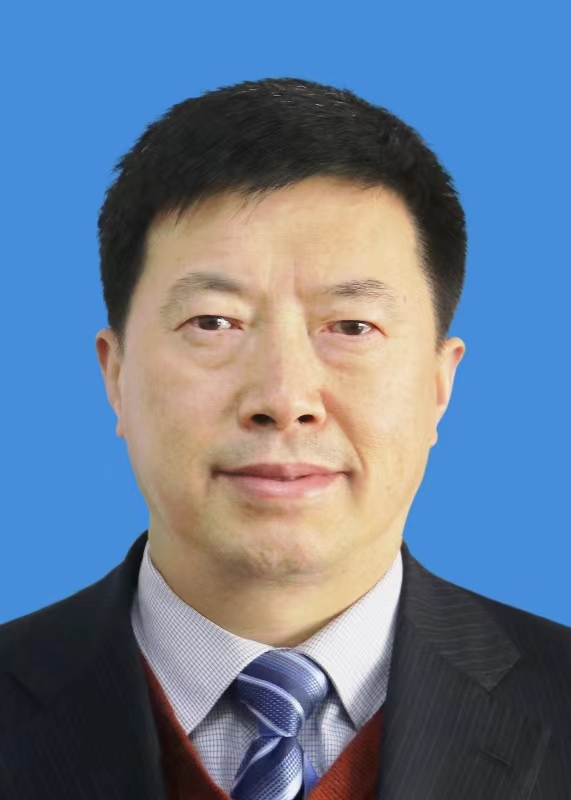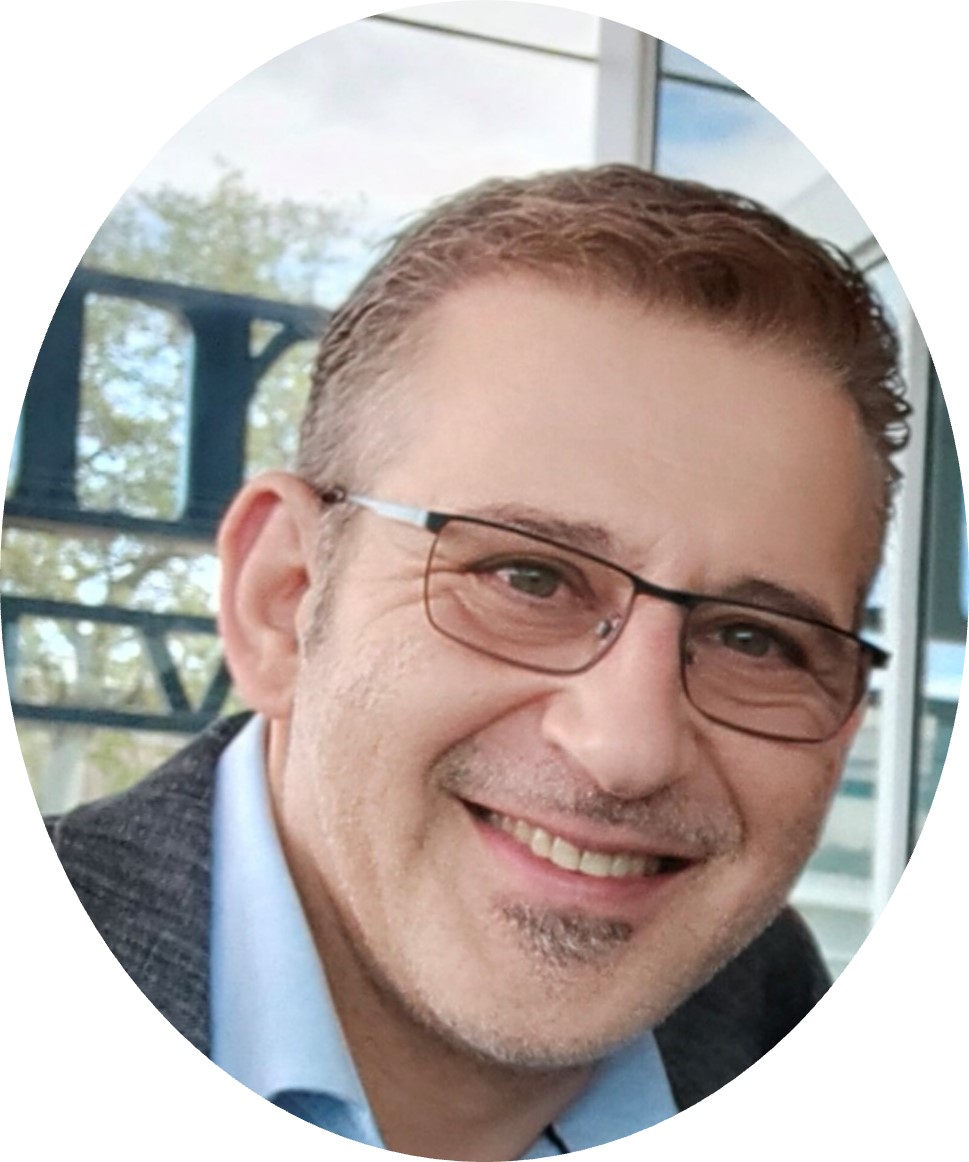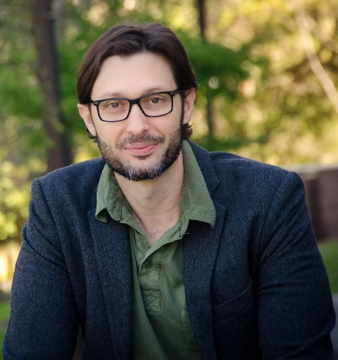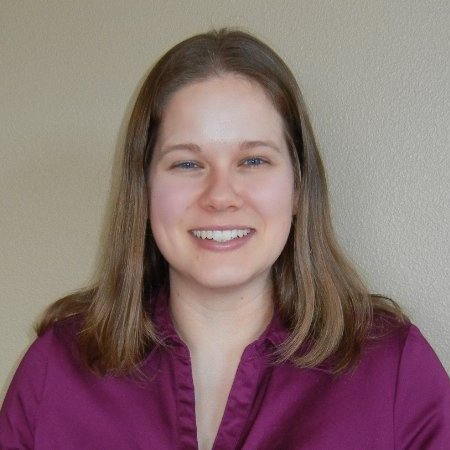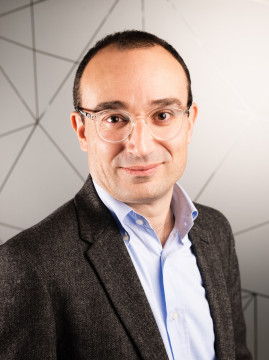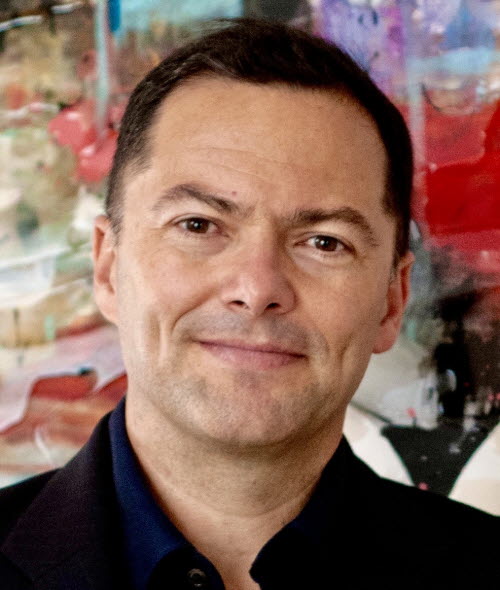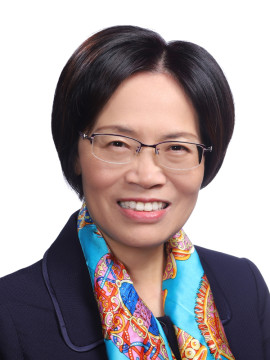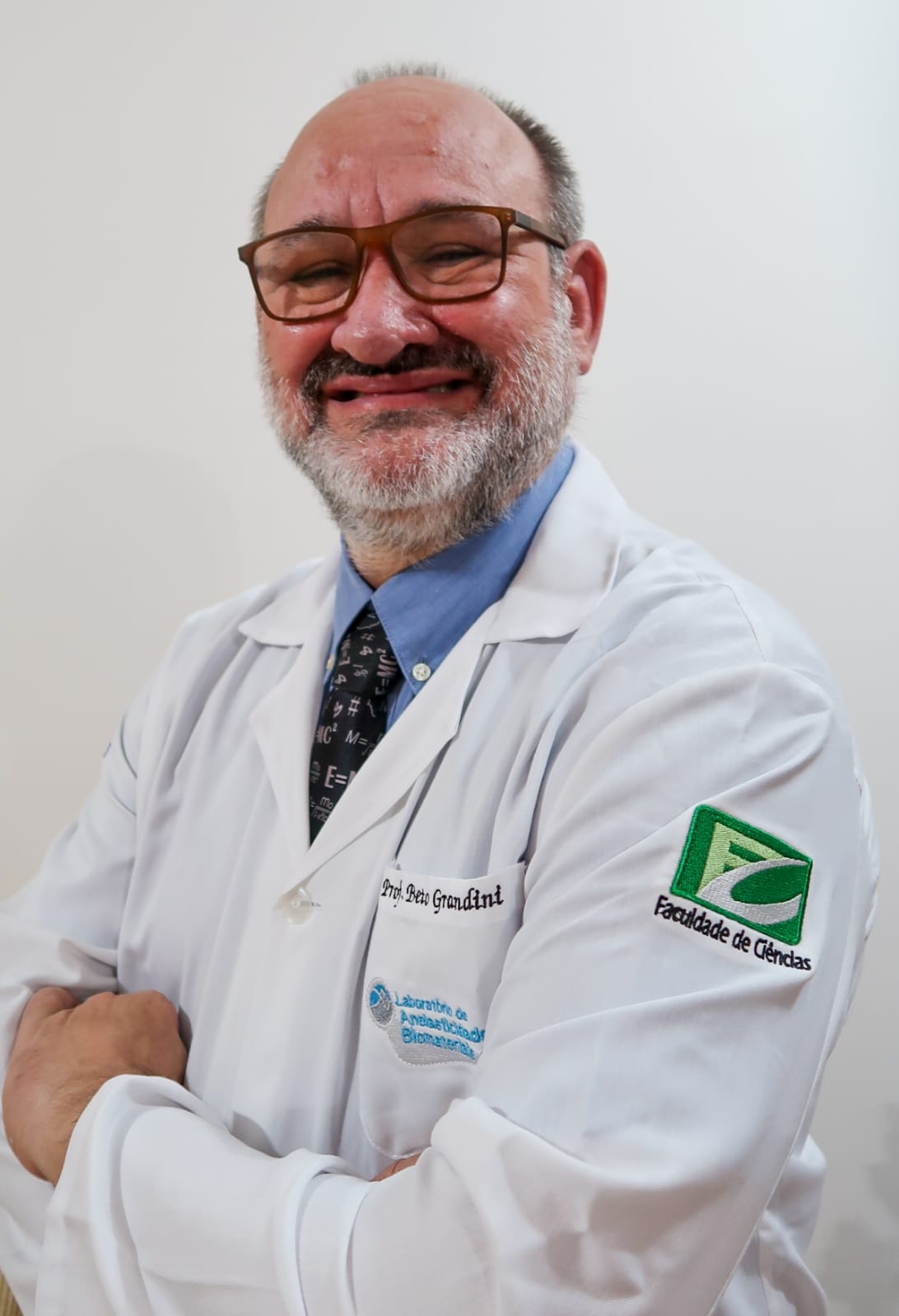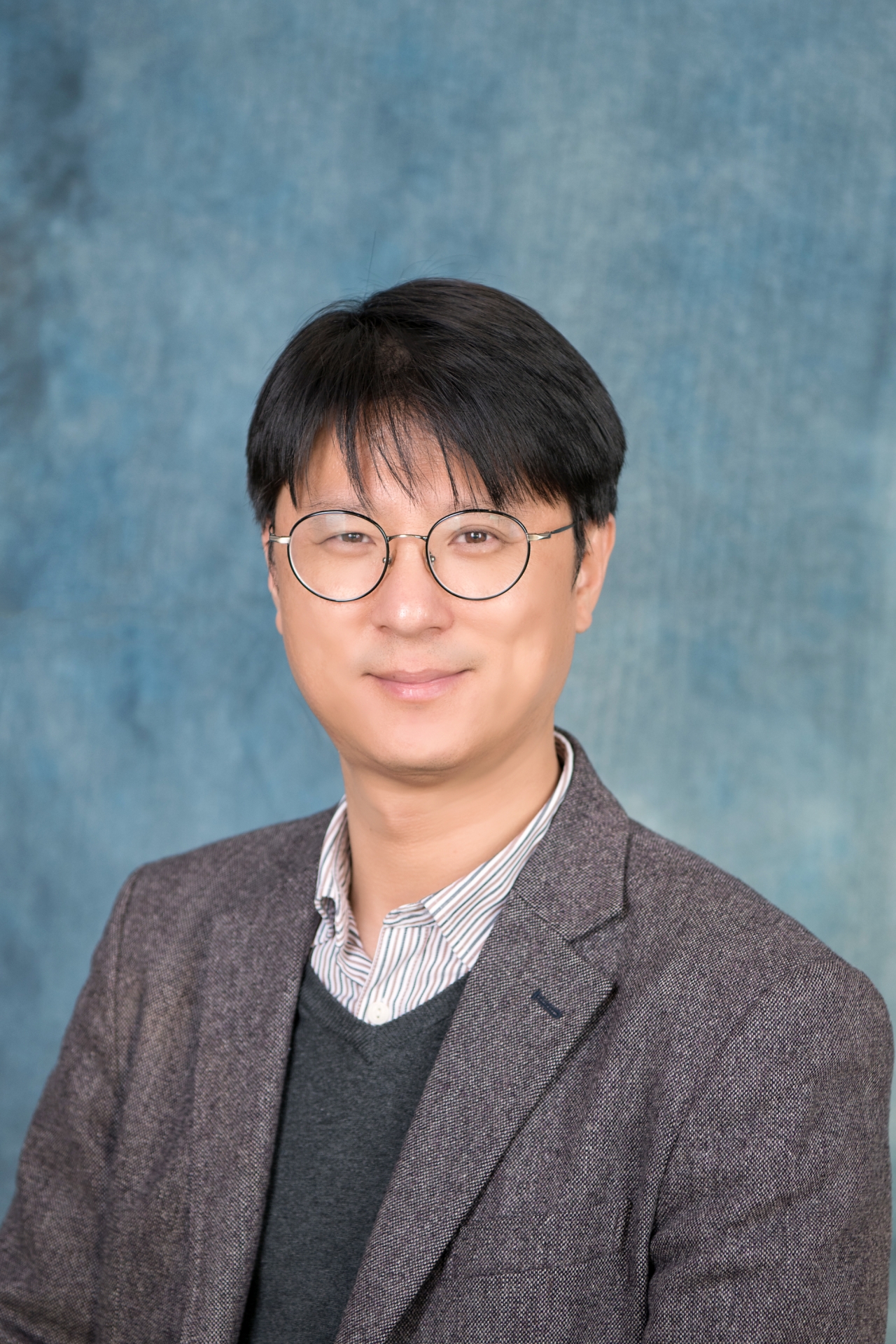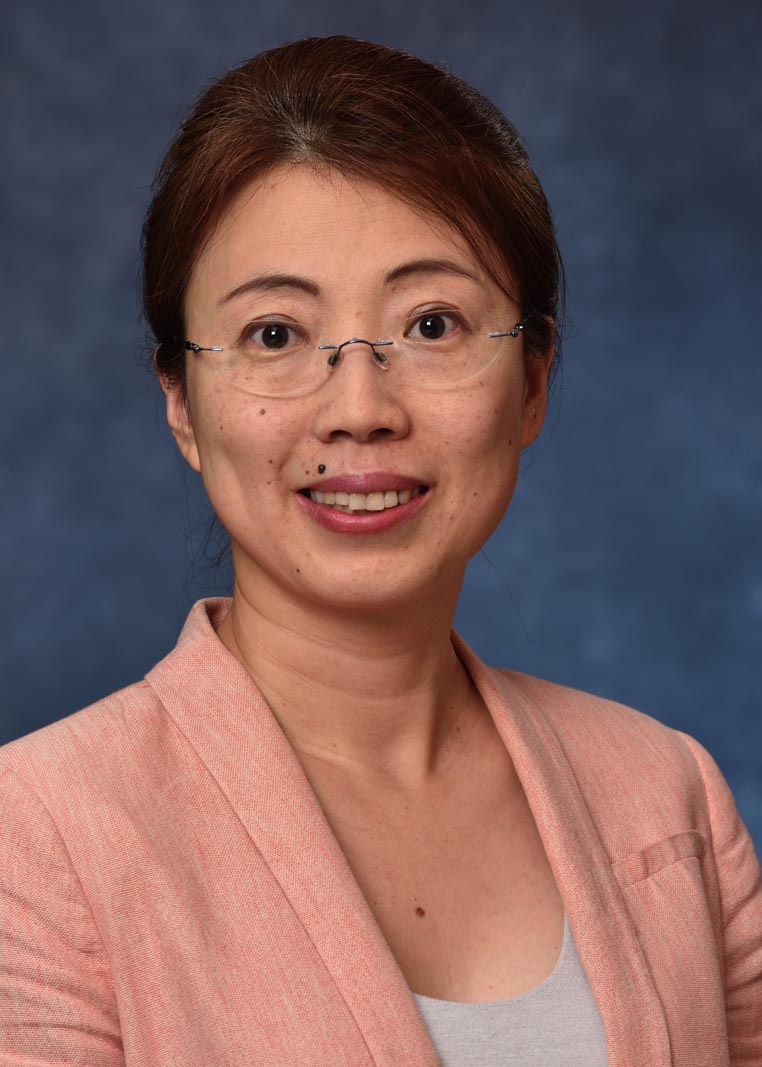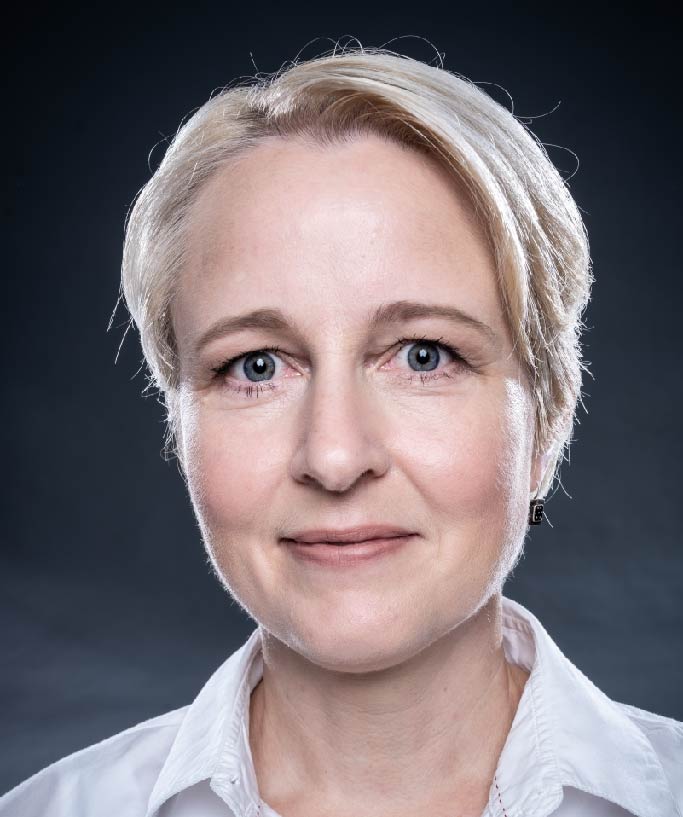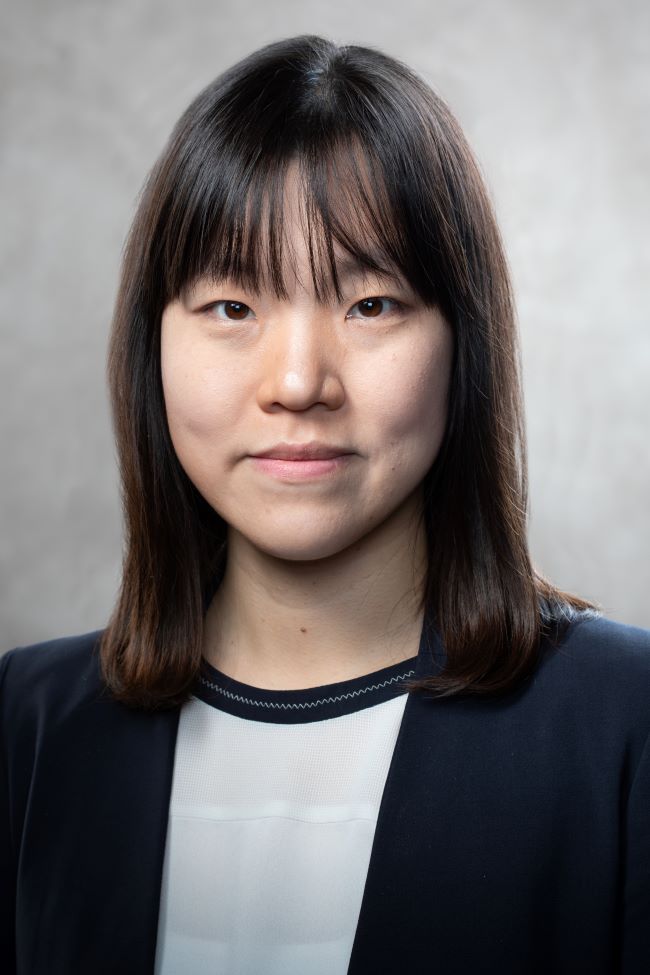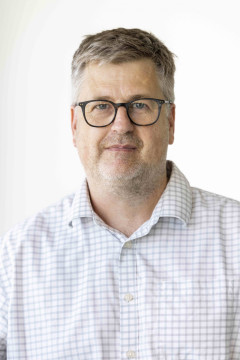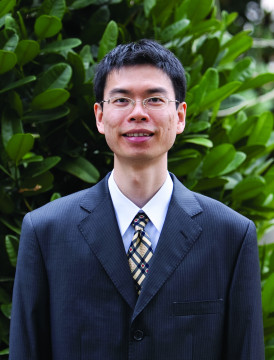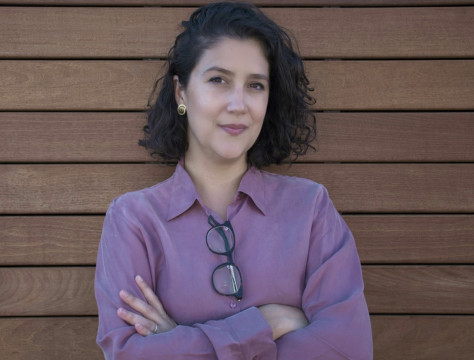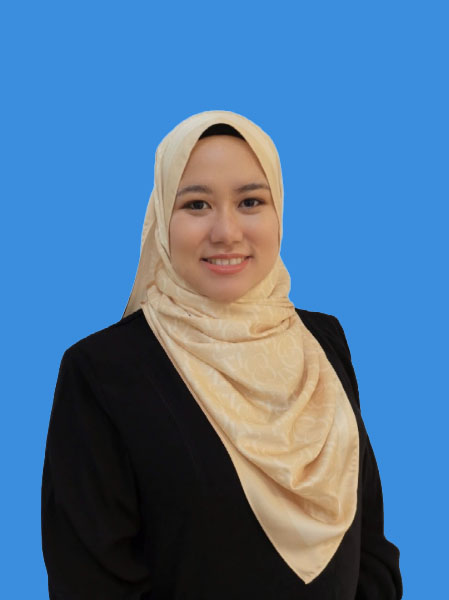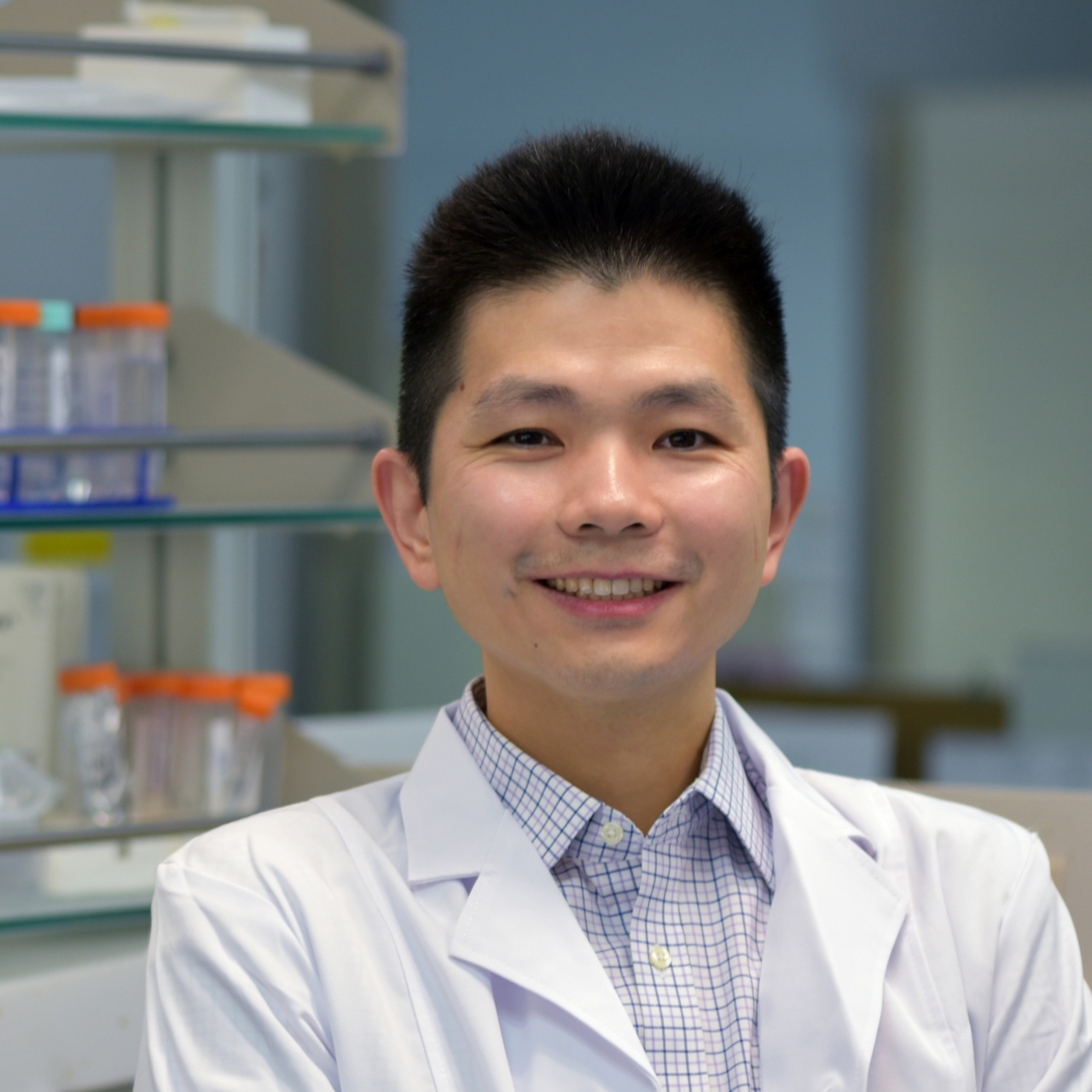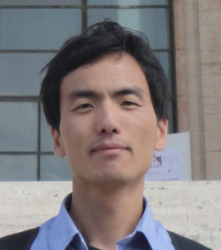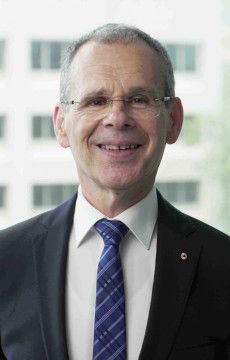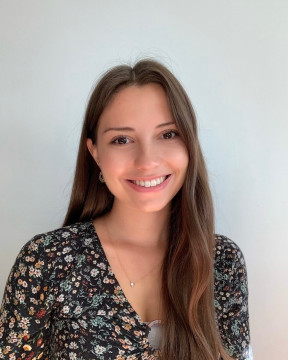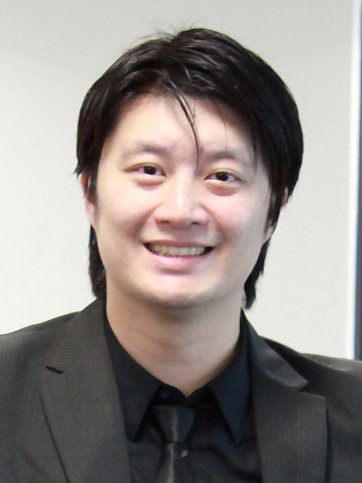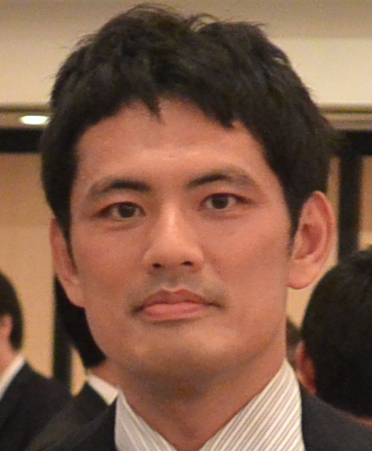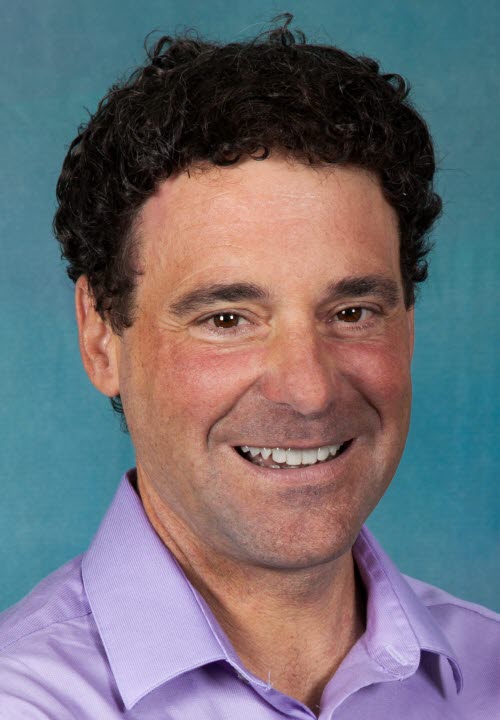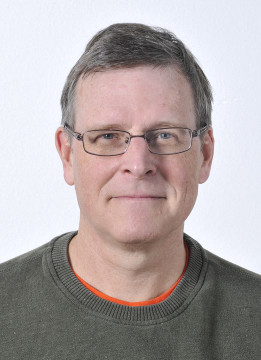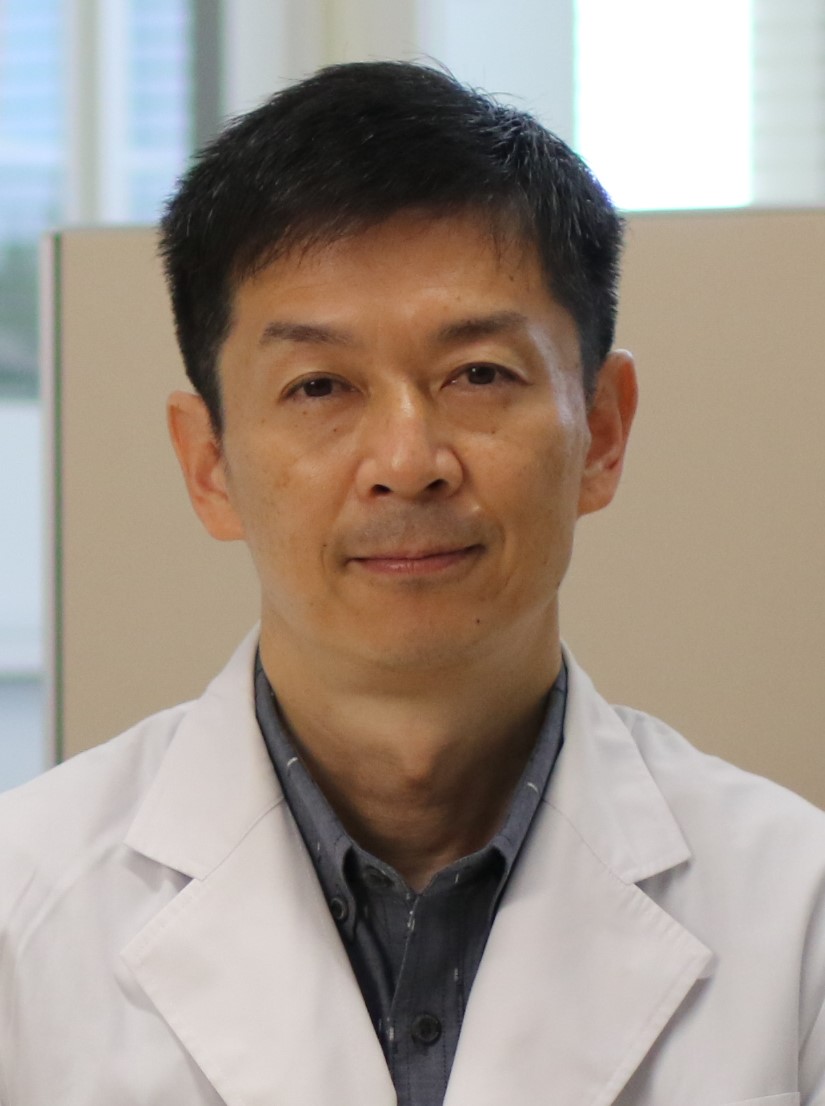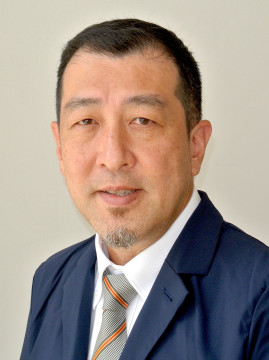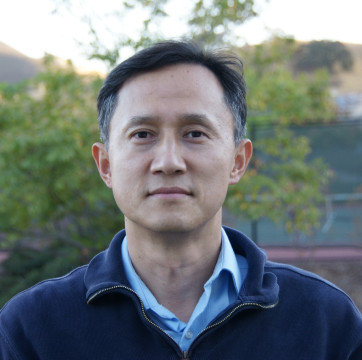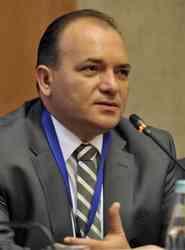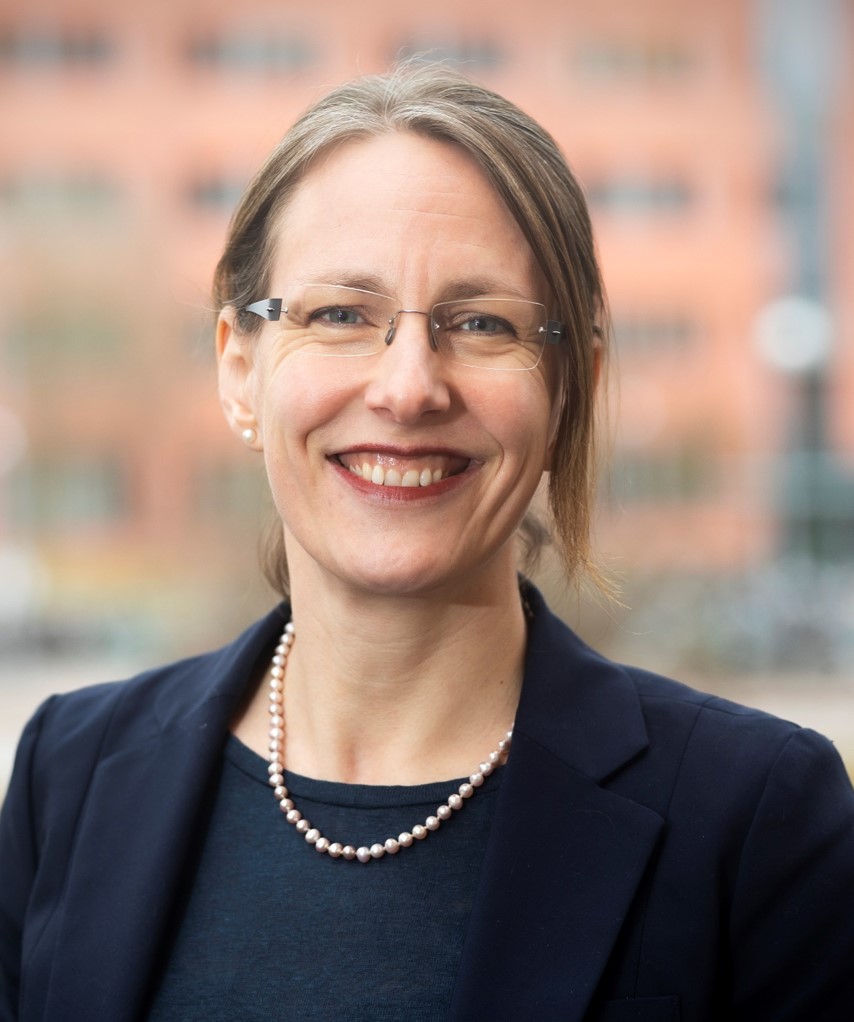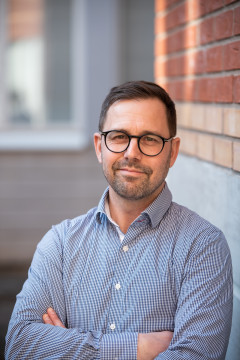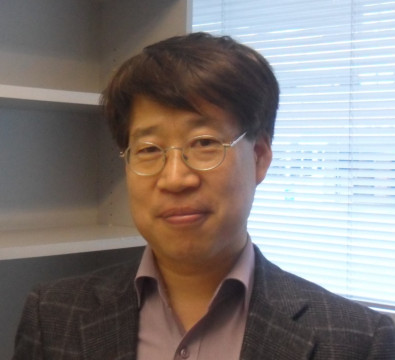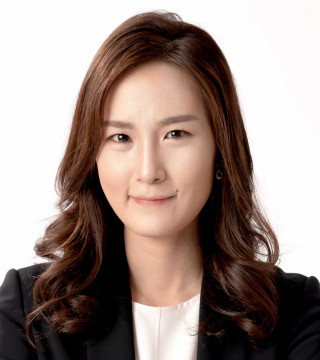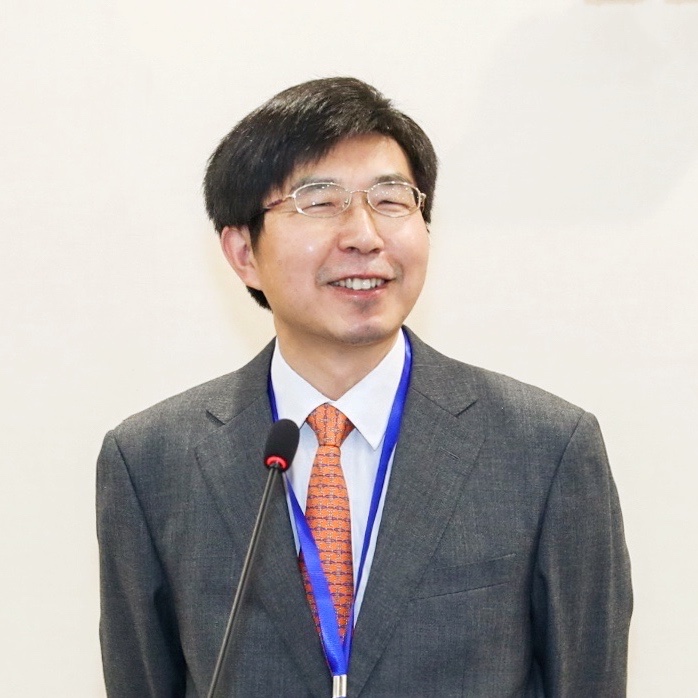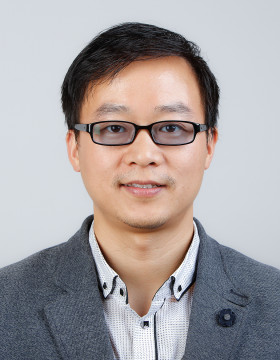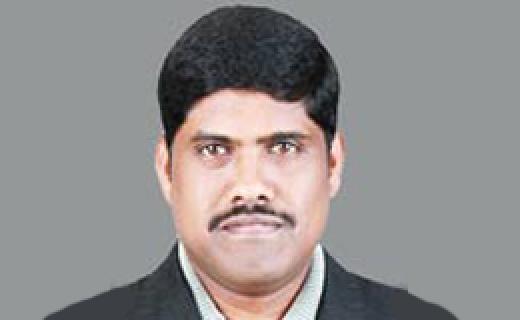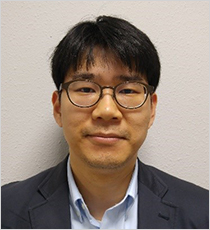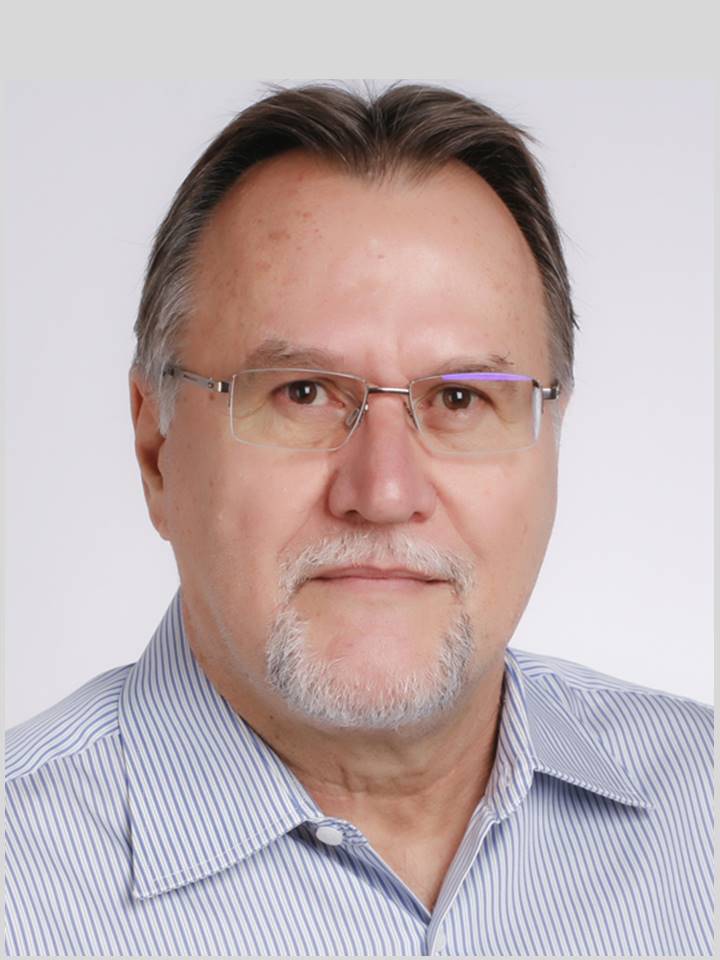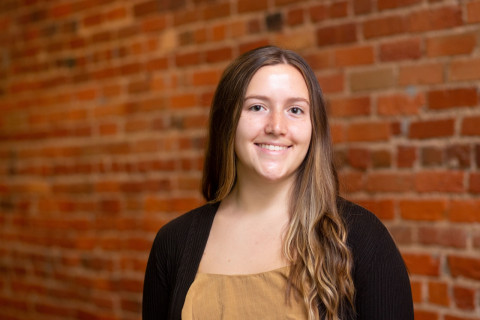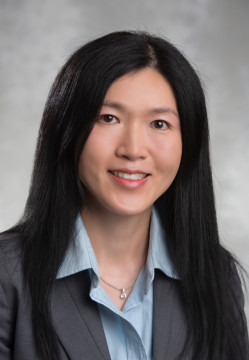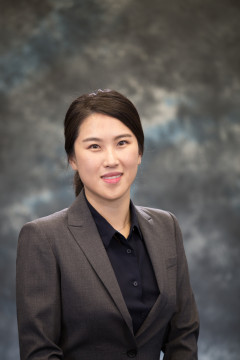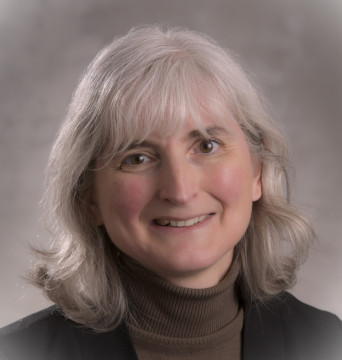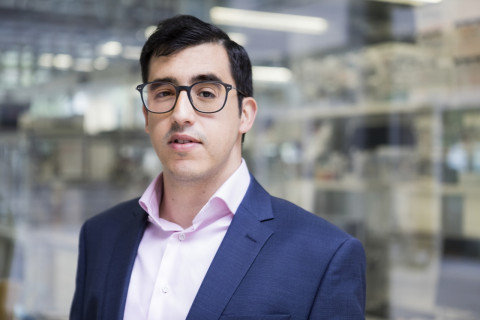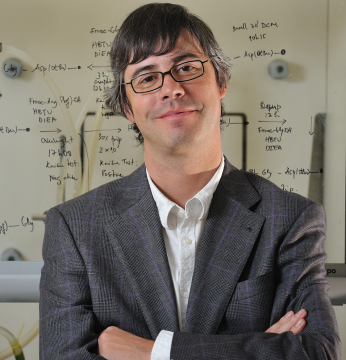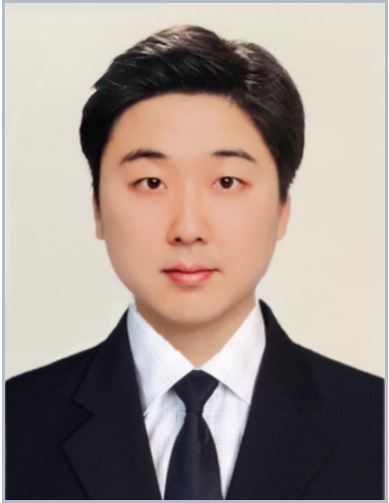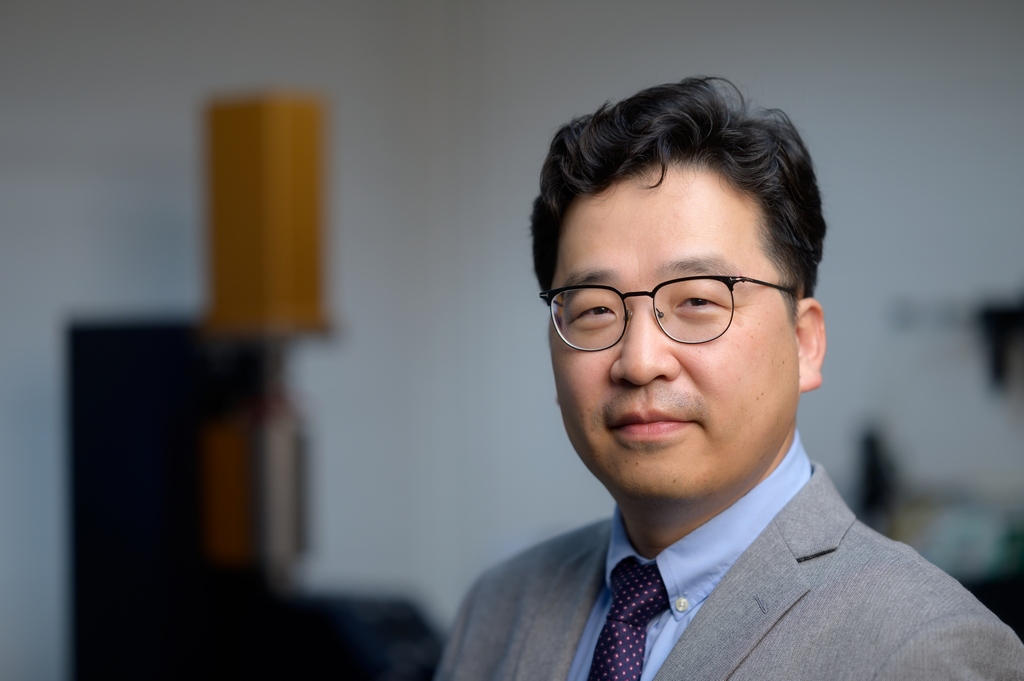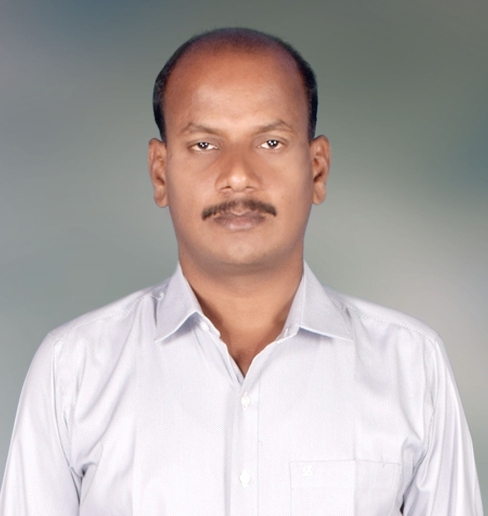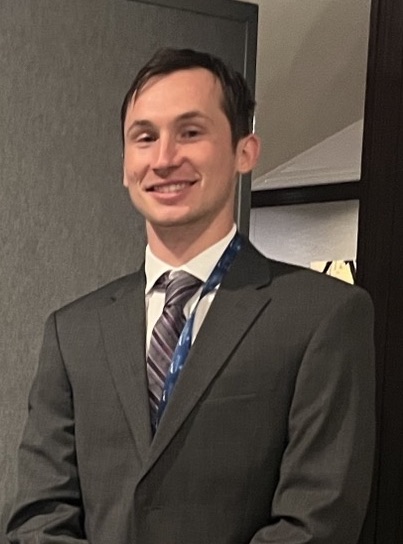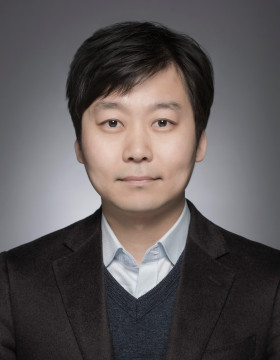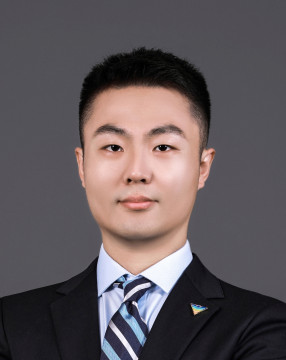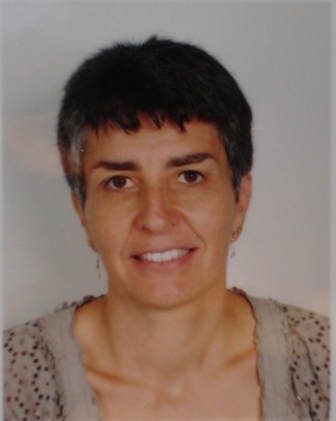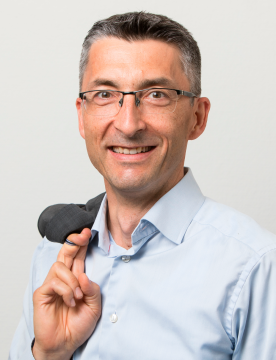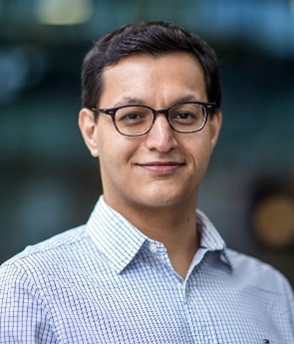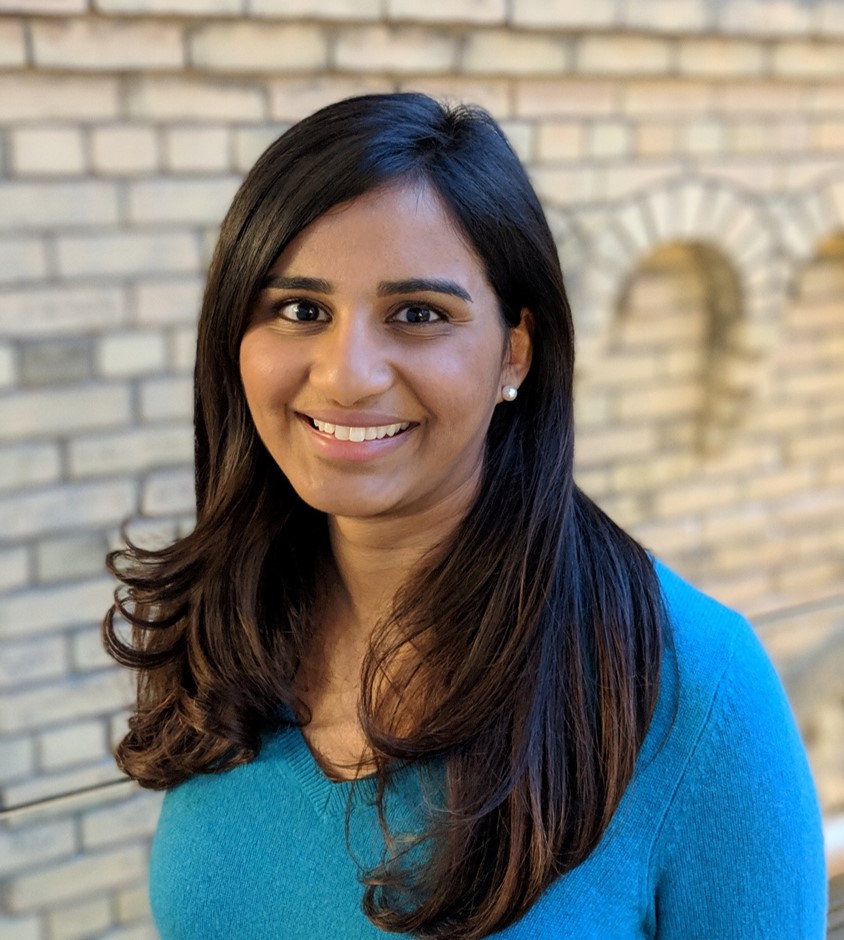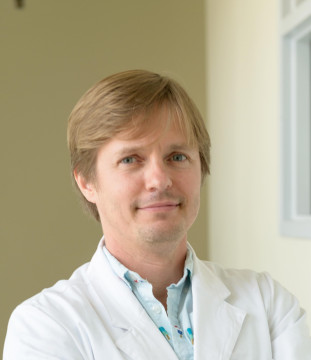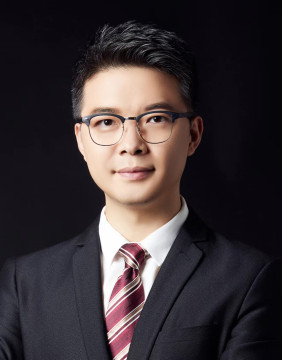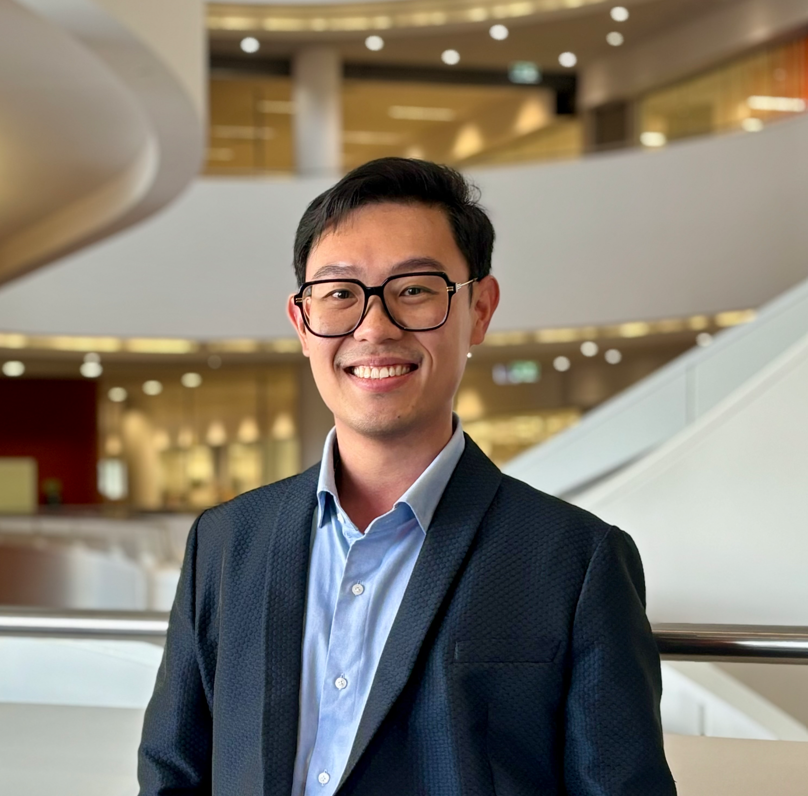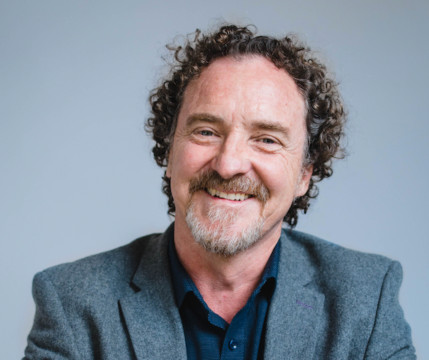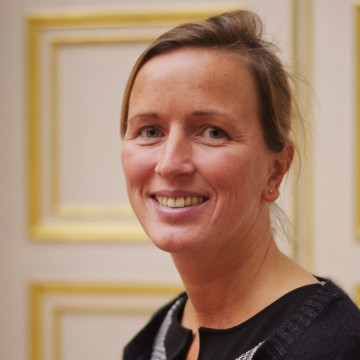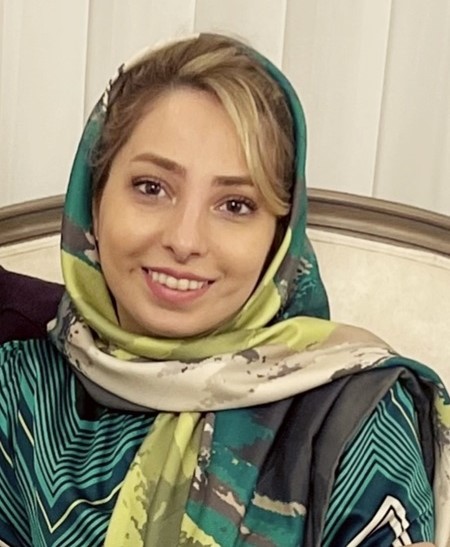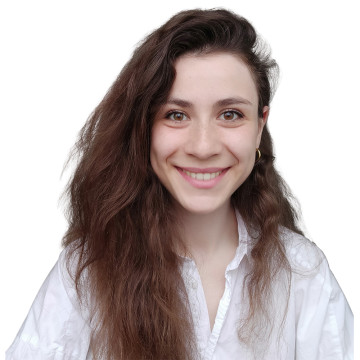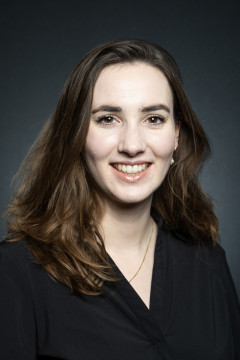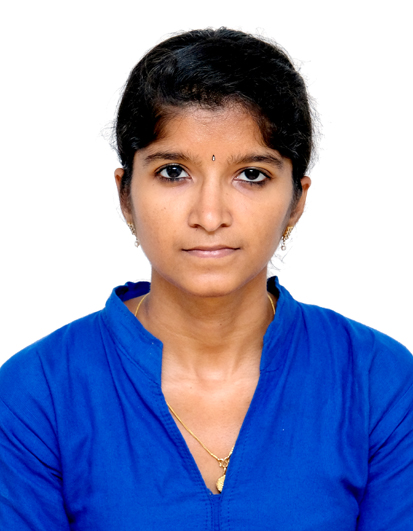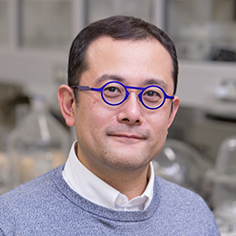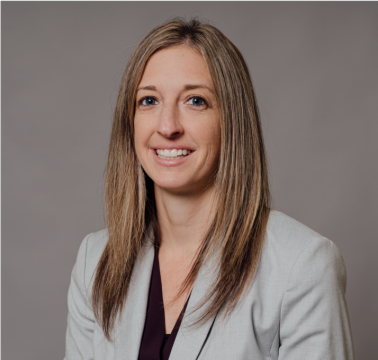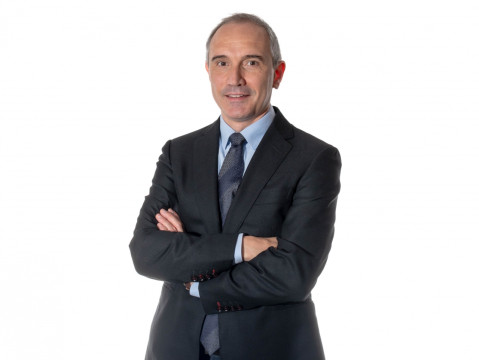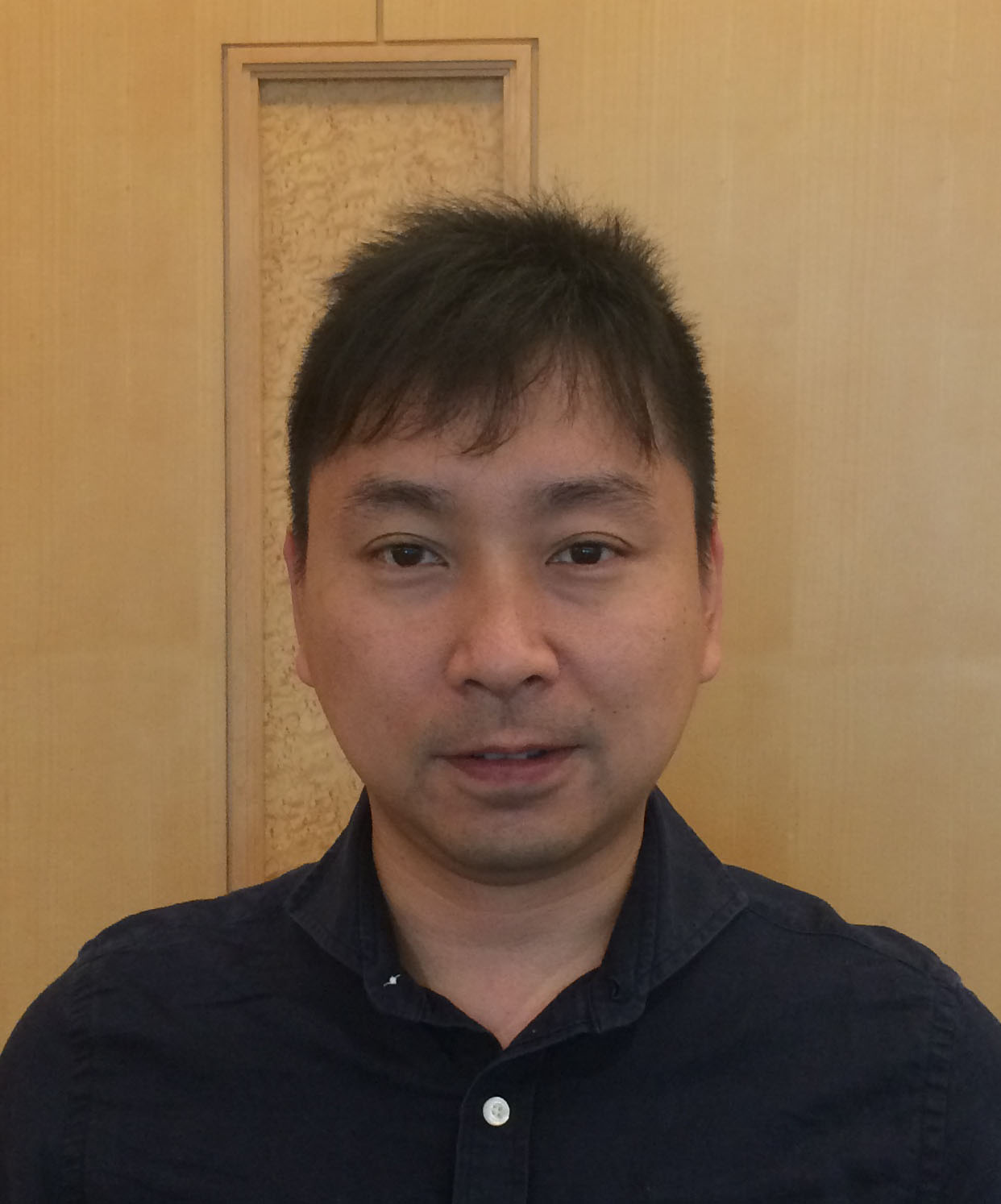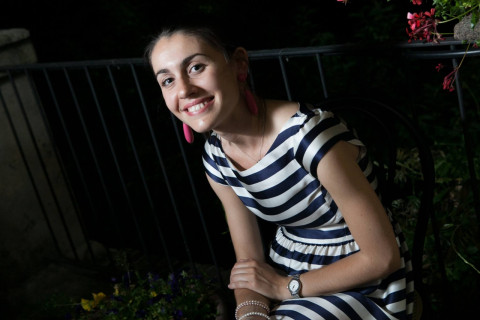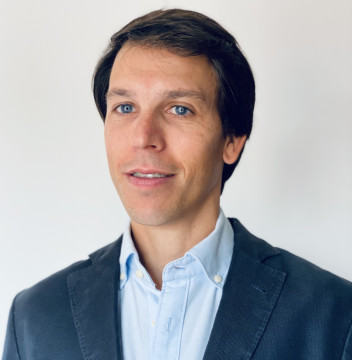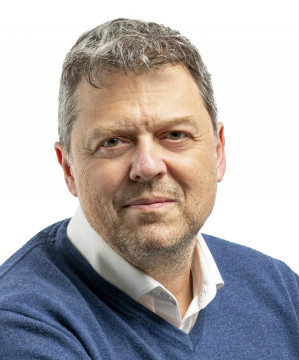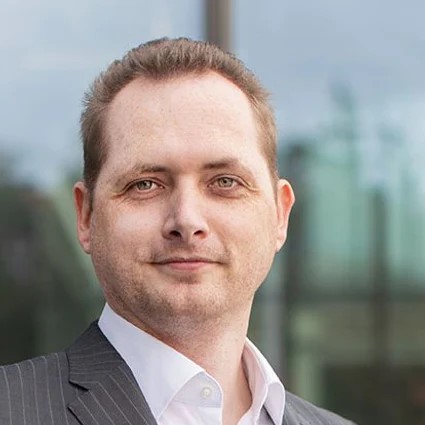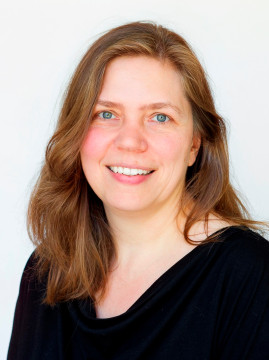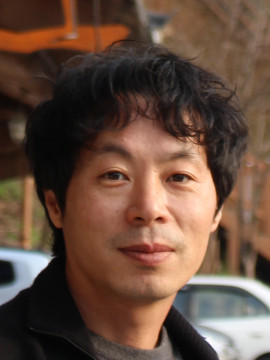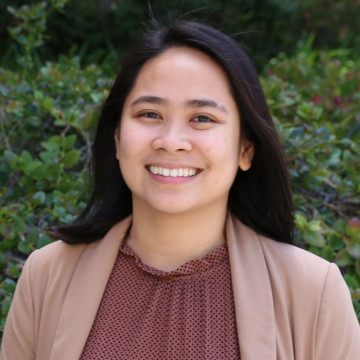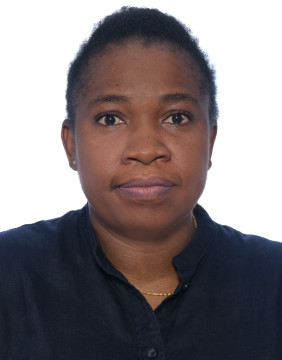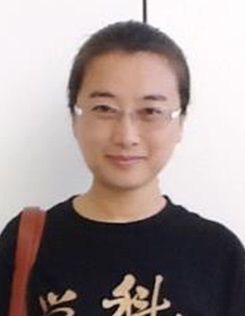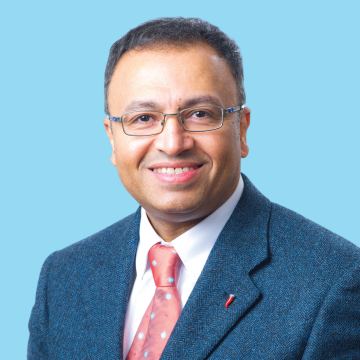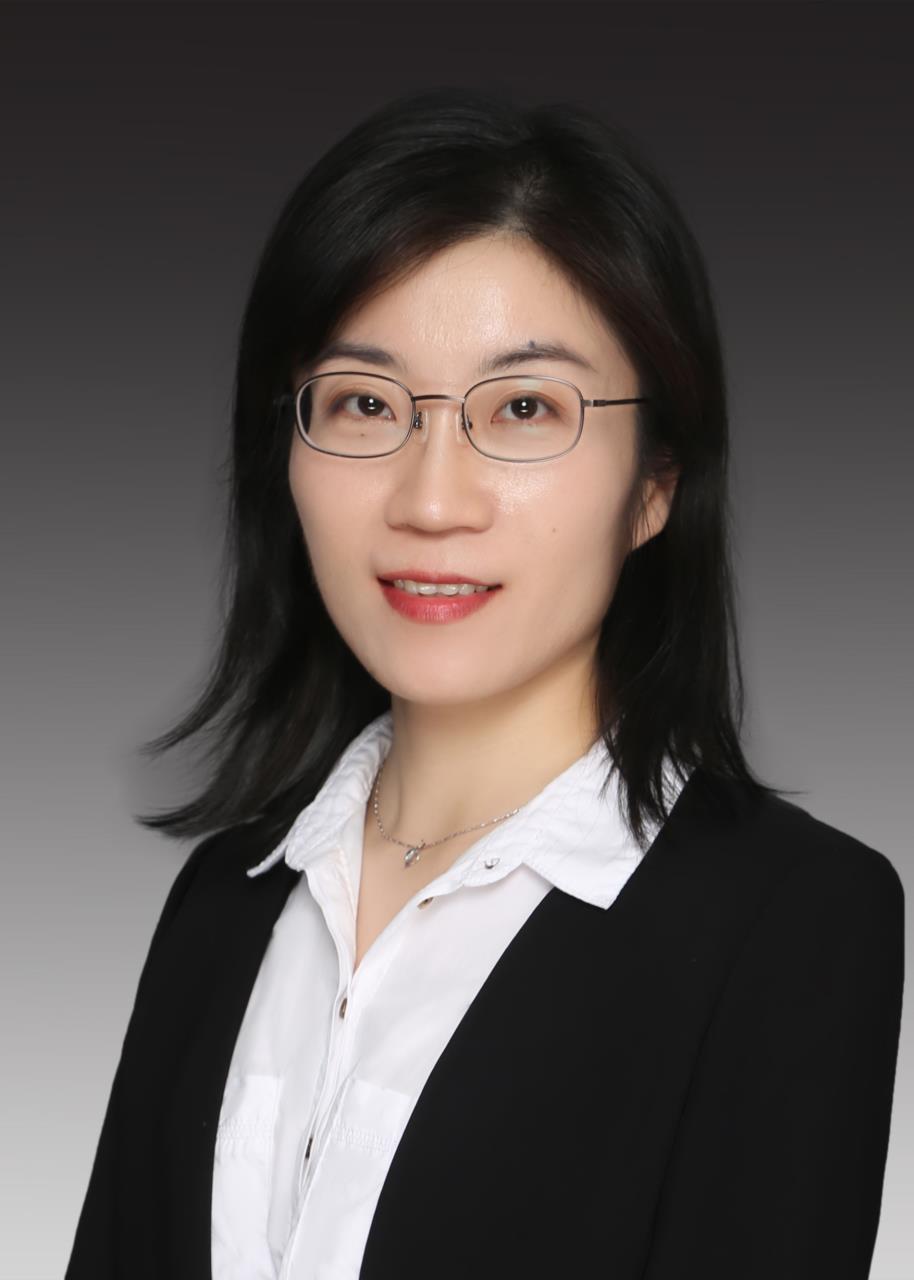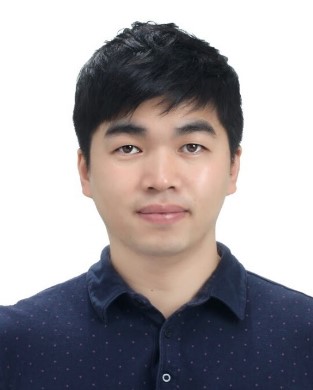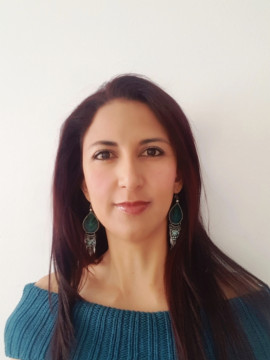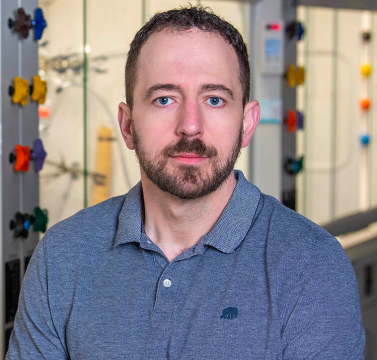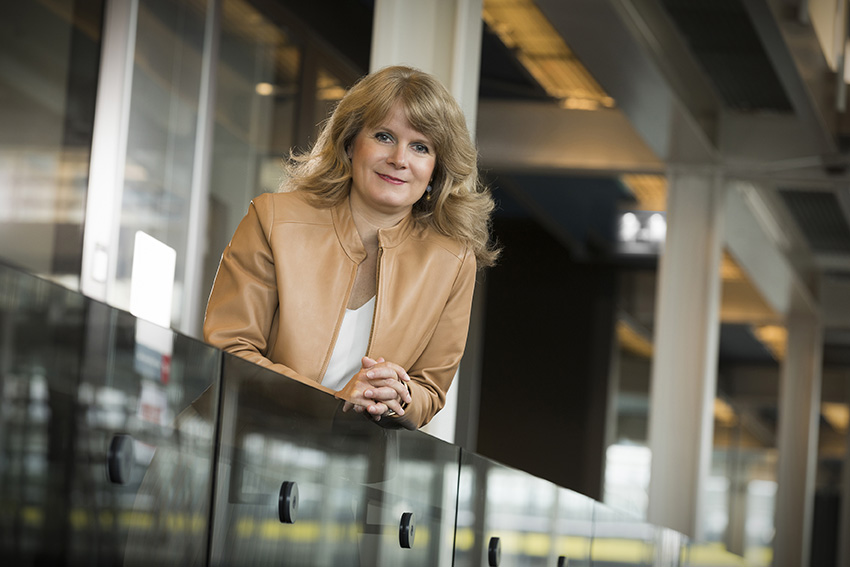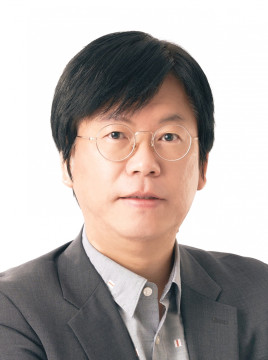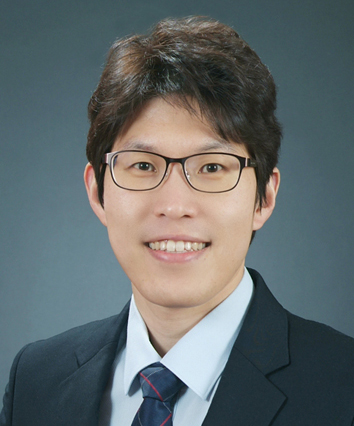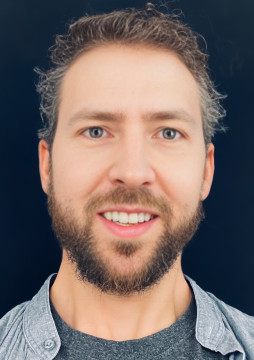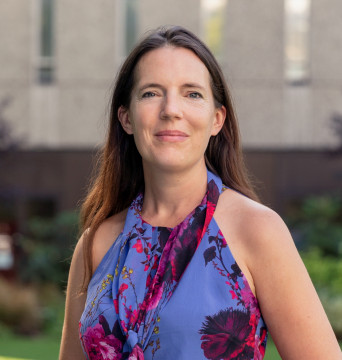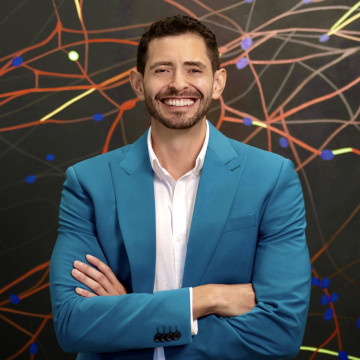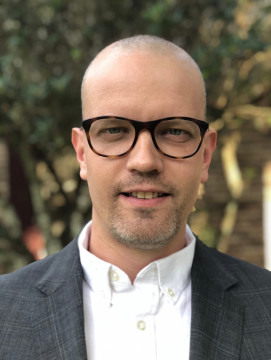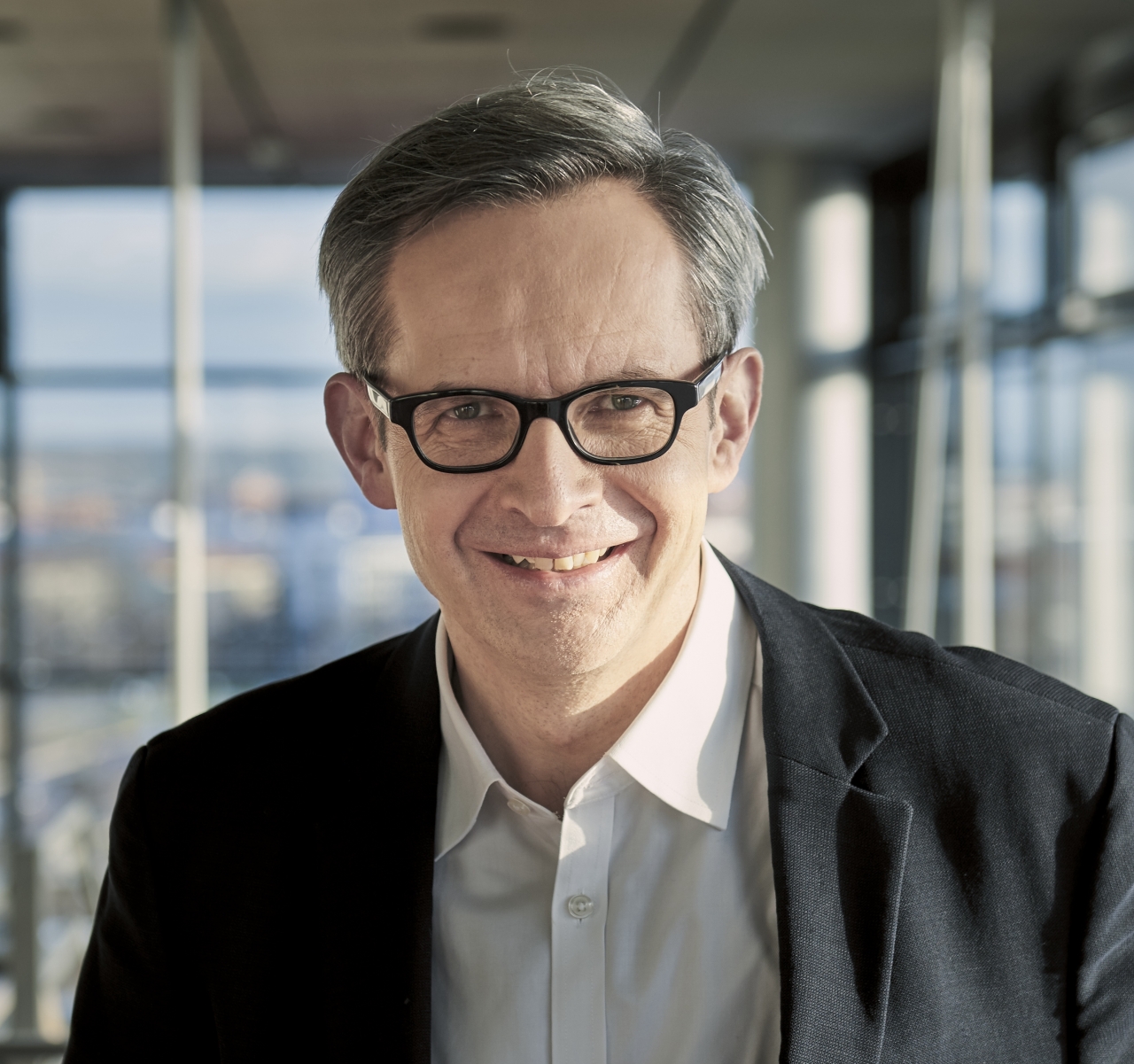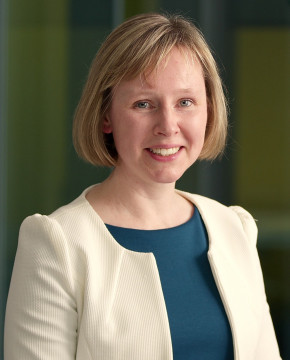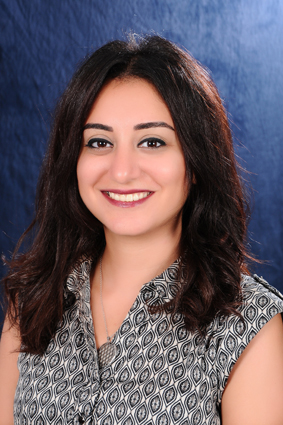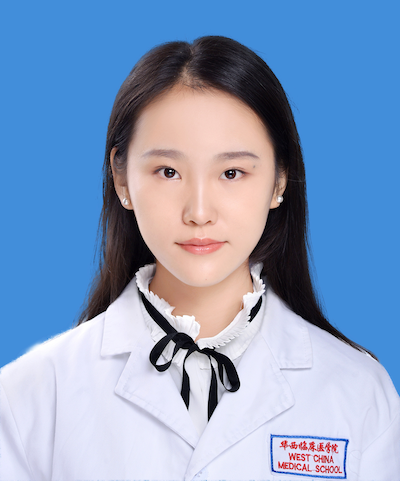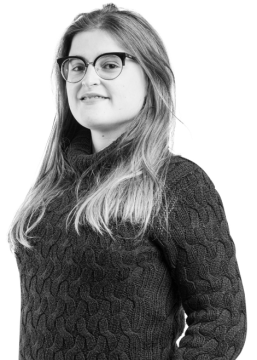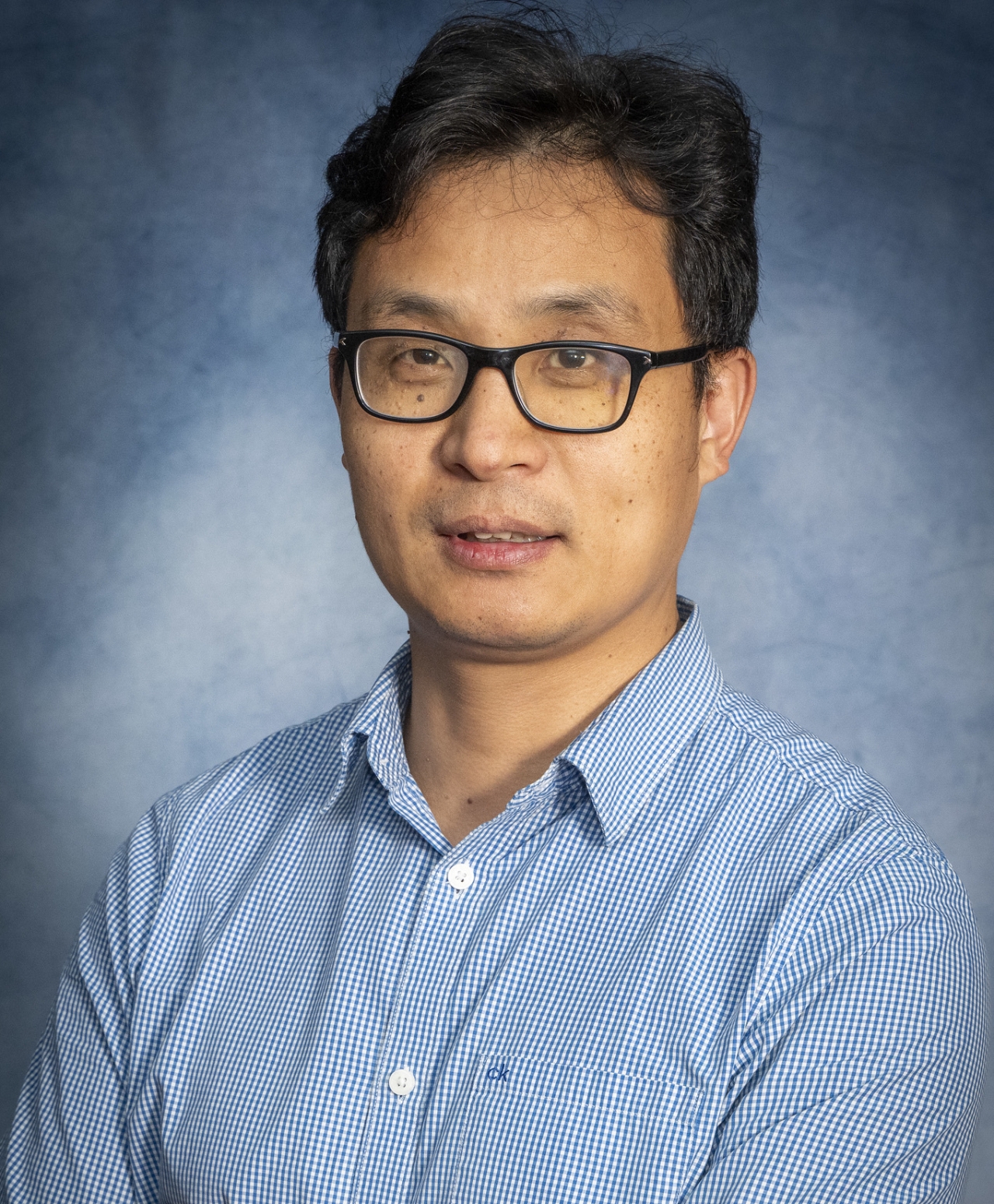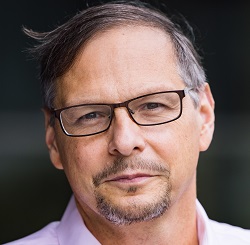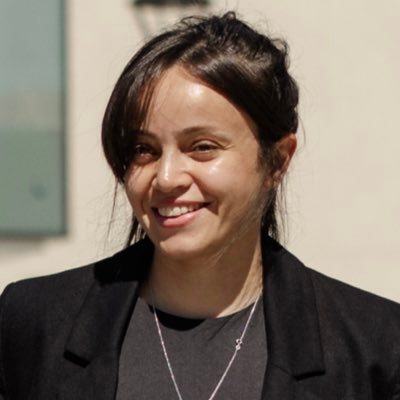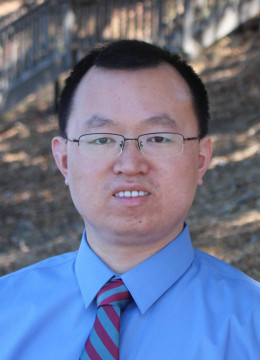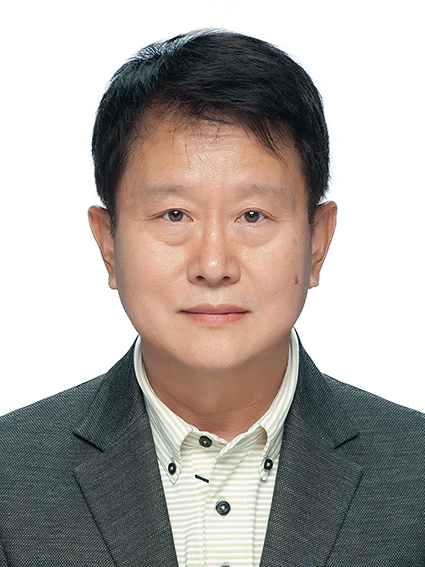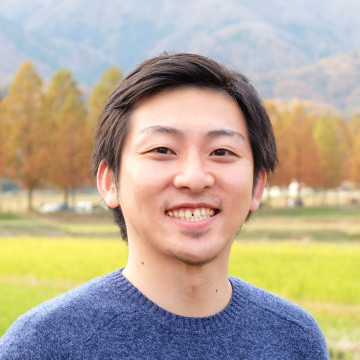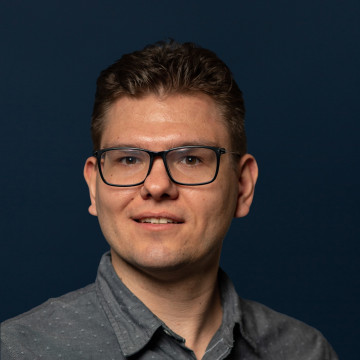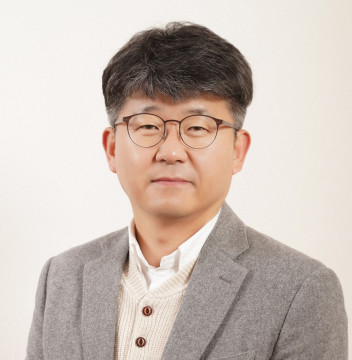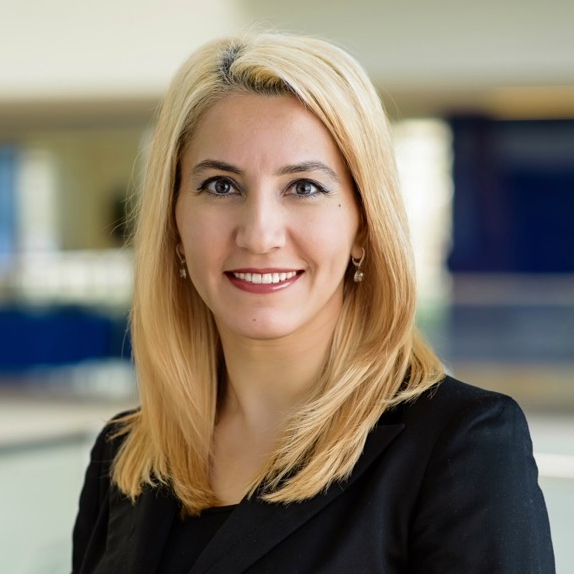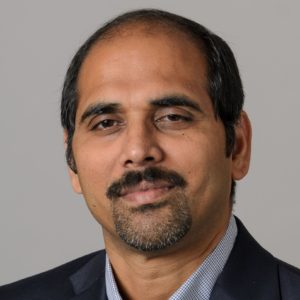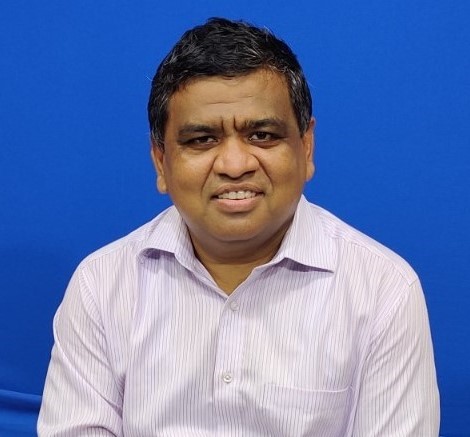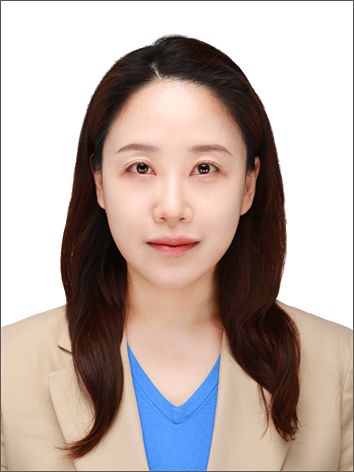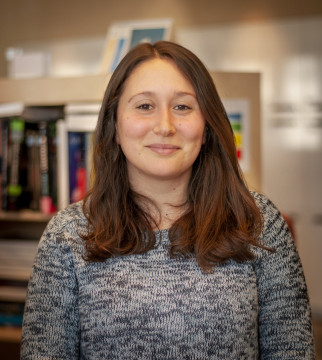Scientific Program
You can update your brief biography and profile picture on the [My Profile] page.
- Session TrackBiomaterials design
- Session TitleBiomaterial Design for Immunoengineering
- Session CodeSP-T01-0026
- Date & Time / RoomMay 31 (Fri) 9:30~11:00 / Room 306-B
- Organizer
-
Abhinav Acharya (Arizona State University, USA)
- Chair
-
Abhinav Acharya (Arizona State University, USA)
Junsang Doh (Seoul National University, Korea, Republic of)
- Keynote Speaker
-
9:30~9:55 : Multidimensional immunoengineering approaches to enhanced cancer immunotherapy Li Tang (EPFL, Switzerland)
- Invited Speaker
-
9:55~10:10 : Research on the extrahepatic targeting delivery of siRNA therapeutics Huining He (School of Pharmacy, Tianjin Medical University, China)
10:10~10:25 : One stone fourbirds: application of ginsenosides to prepare multifunctional liposomal delivery system for cancer therapy Jianxin Wang (School of Pharmacy, Fudan University, China)
- Oral Presenter
-
10:25~10:35 : Evaluation of an osteoinductive bone graft with submicron surface topography in a clinically-relevant sheep posterolateral lumbar spine fusion model Nathan Kucko (Kuros Biosciences, Netherlands)
10:35~10:45 : One Produces Multi: A Drug-free Cardiovascular Stent Functionalized with Tailored Collagen Supports in-situ Healing of Vascular Tissues Haoshuang Wu (Sichuan University, China)
10:45~10:55 : Photocrosslinked silk fibroin microgels and microgel scaffolds for biomedical applications Jelena Rnjak-Kovacina (University of New South Wales, Australia)
- Session TrackBiomaterials design
- Session TitleFunctionalization and commercialization of nano/micro-structured materials
- Session CodeSP-T01-0036
- Date & Time / RoomMay 30 (Thu) 16:30~18:00 / Room 306-B
- Organizer
-
Sung Yun Yang (Chungnam National University, Korea, Republic of)
- Chair
-
Sung Yun Yang (Chungnam National University, Korea, Republic of)
Nguyen Kim Nga (Hanoi University of Science & Technology, Vietnam)
- Keynote Speaker
-
16:30~16:55 : Factory-on-a-Chip: Scaling-up Microfluidics for Large-Scale Biomaterials Synthesis Daeyeon Lee (University of Pennsylvania, USA)
- Invited Speaker
-
16:55~17:10 : Machine Deep-Learning Analysis of Living Cell Morphology on 2D versus Psuedo-3D Polymeric Surface Sung Yun Yang (Chungnam National University, Korea, Republic of)
17:10~17:25 : Addressing boron neutron capture therapy’s bottlenecks: The synthesis, functionalization, and therapeutic potential of boron-based nanoparticles Pei Yuin Keng (National Tsing Hua University, Chinese Taipei)
17:25~17:40 : Optical Assessment of Tear Glucose by Smart Biosensor based on Chromophoric Cerium Oxide Nanoparticle Dong Yun Lee (Hanyang University, Korea, Republic of)
- Oral Presenter
-
17:40~17:50 : Cell Painting with supramolecular assemblies: exploring biomimicry via high-throughput screening. Victor Veenbrink (Eindhoven University of Technology, Netherlands)
17:50~18:00 : Functionalized hydrogels interface with inflamed mucosa for material-tissue interaction in murine models of inflammatory bowel disease Sufeng Zhang (Brigham and Women's Hospital and Harvard Medical School, USA)
- Session TrackBiomaterials design
- Session TitleNext Generation Biomaterials for Stem Cell Culture and Differentiation
- Session CodeSP-T01-0038
- Date & Time / RoomMay 30 (Thu) 9:30~11:00 / Room 306-B
- Organizer
-
Akon Higuchi (National Central University, Chinese Taipei)
- Chair
-
Akon Higuchi (National Central University, Chinese Taipei)
Guoping Chen (National Institute for Materials Science, Japan)
- Keynote Speaker
-
9:30~9:55 : Biomimetic ECM scaffolds and their influences on stem cell differentiation Guoping Chen (National Institute for Materials Science, Japan)
- Invited Speaker
-
9:55~10:10 : Cell sorting biomaterials for purification of cardiomyocytes differentiated from human pluripotent stem cells Akon Higuchi (National Central University, Chinese Taipei)
Yinghong Zhou (The University of Queensland, Australia)
10:25~10:40 : Extracellular matrix (ECM)-inspired biomaterial for hPSC-MSCs isolation and iPSCs reprogramming Byung-Hyun Cha (Kangwon National University, Korea, Republic of)
10:40~10:55 : Cell-adaptable dynamic hydrogels for tissue engineering Liming Bian (South China University of Technology, China)
- Session TrackBiomaterials design
- Session TitleBiomaterial strategies for delivering biologics and therapeutic cells to transform cancer immunotherapy
- Session CodeSP-T01-0294
- Date & Time / RoomMay 31 (Fri) 9:30~11:00 / Room 325-AB
- Organizer
-
Sergio Moya (CIC biomaGUNE, Spain)
- Chair
-
Horacio Cabral (University of Tokyo, Japan)
Sergio Moya (CIC biomaGUNE, Spain)
- Keynote Speaker
-
9:30~9:55 : Engineering cells for cancer immunotherapy Quanyin Hu (University of Wisconsin-Madison, USA)
- Invited Speaker
-
9:55~10:10 : Multiscale design of 3D hydrogel bioink with ROS scavenging and inner retina tissue regeneration Jiashing Ju (National Taiwan University, Chinese Taipei)
10:10~10:25 : Bioengineering approaches to elucidate interactions between immune cells and cancer cells at the nanoscale Hae Lin Jang (Brigham and Women's Hospital, Harvard Medical School, USA)
- Oral Presenter
-
10:25~10:35 : Enhancing Tumor-Targeting Bacteria Efficacy via Smart Polymer Shield Encapsulation Diego Cattoni (Center of Structural Biology, CNRS UMR 5048 - UM - INSERM U 1054, France)
10:35~10:45 : Injectable granular hydrogels enable avidity-controlled cytokine delivery Arielle D'Elia (Drexel University, USA)
10:45~10:55 : Optimising the formulation of hydrogel-based non-viral carrier for gene delivery in the treatment of epidermolysis bullos SeyedehZohreh MousaviNejad (Dublin City University, Ireland)
- Session TrackBiomaterials design
- Session TitleLeveraging cell microenvironment and immune system to heal and regenerate
- Session CodeSP-T01-0300
- Date & Time / RoomMay 30 (Thu) 13:40~15:10 / Room 325-AB
- Organizer
-
Matteo D'Este (AO Research Institute Davos, Switzerland)
- Chair
-
Claudia Loebel (University of Michigan, USA)
Matteo D'Este (AO Research Institute Davos, Switzerland)
- Keynote Speaker
-
13:40~14:05 : Engineering the cell-matrix interface - understanding and guiding cell function Claudia Loebel (University of Michigan, USA)
- Invited Speaker
-
14:05~14:20 : Towards understanding neutrophils role in biomaterials-mediated immunomodulation Matteo D'Este (AO Research Institute Davos, Switzerland)
- Oral Presenter
-
14:20~14:30 : Engineering immunomodulatory materials for regenerative medicine Daniel Salthouse (Newcastle University, United Kingdom)
14:30~14:40 : Alkaline hydrogels initiate endogenous TGFβ signaling for in situ tissue regeneration Yuting Niu (Peking University, China)
14:40~14:50 : Synthesis and characterization of binary mesoporous bioactive glass submicron particles containing cobalt and curcumin for wound healing applications Amanda Maria Almeida Coco (Friedrich Alexander Universität Erlangen-Nürnberg, Germany, Germany)
14:50~15:00 : Conductive double network eutectogel cooperates with electrical stimulation to facilitate burn wound healing by mimicking physiological properties of natural skin Yu Tian (Ocean Univertisy of China, China)
- Session TrackBiomaterials design
- Session TitleMateriobiology
- Session CodeSP-T01-0307
- Date & Time / RoomMay 30 (Thu) 9:30~11:00 / Room 320-B
- Organizer
-
Changsheng Liu (Shanghai University, China)
- Chair
-
Changsheng Liu (Shanghai University, China)
Joachim Kohn (Rutgers University, USA)
- Keynote Speaker
-
9:30~9:55 : Decoding biomaterial-mediated regeneration: from the perspective of materiobiology Changsheng Liu (Shanghai University, China)
9:55~10:20 : Nanoengineered biomaterials for medicine and beyond Krasimir Vasilev (College of Medicine and Public Health, Flinders University, Australia)
- Invited Speaker
-
10:20~10:35 : Tissue-Anchored Indoleamine 2,3 Dioxygenase Locally Suppresses Inflammation Benjamin Keselowsky (University of Florida, USA)
Young Jang (Georgia Tech/Emory, USA)
- Oral Presenter
-
10:50~11:00 : Exploring the blood-contacting response of biodegradable metals Deirdre Anderson (Oregon Health and Science University, USA)
- Session TrackBiomaterials design
- Session TitleEngineering regenerative biomaterials through bioinspired and biocooperative approaches
- Session CodeSP-T01-0322
- Date & Time / RoomMay 29 (Wed) 13:40~15:10 / Room 325-AB
- Organizer
-
Tiziano Serra (AO Research Institute Davos, Switzerland)
- Chair
-
Matteo D'Este (AO Research Institute Davos, Switzerland)
- Keynote Speaker
-
Alvaro Mata (Nottingham University, United Kingdom)
- Invited Speaker
-
14:05~14:20 : Novel Fibrous Biomaterials: Nano-Hybridization and Biomimetic Fabrication Meifang Zhu (Donghua University, China)
- Oral Presenter
-
14:20~14:30 : Novel Ti-10Mo-Mn system alloys for biomedical applications Carlos Roberto Grandini (UNESP - Univ Estadual Paulista, Brazil)
14:30~14:40 : On the communication between nuclei and mitochondria in a hydrogel environment Cathrine Abild Meyer (Aarhus University, Denmark)
14:40~14:50 : A bilayer membrane containing intrafibrillarly mineralized collagen and pure zinc enhanced bone regeneration Dandan Xia (Peking University School and Hospital of Stomatology, China)
- Session TrackBiomaterials design
- Session TitleElectrically conductive polymers for bioelectrode applications
- Session CodeSP-T01-0078
- Date & Time / RoomMay 29 (Wed) 9:30~11:00 / Room 325-AB
- Organizer
-
Jae Young Lee (Gwangju Institute of Science and Technology, Korea, Republic of)
- Chair
-
Jae Young Lee (Gwangju Institute of Science and Technology, Korea, Republic of)
Elisa Castagnola (Louisiana Tech University, USA)
- Keynote Speaker
-
9:30~9:55 : Conducting Polymers and Biomaterial Strategies Towards Seamless Neural Tissue-Device Interface Tracy X. Cui (University of Pittsburgh, USA)
- Invited Speaker
-
9:55~10:10 : Integration of poly(3,4-ethylenedioxythiophene)/carbon nanotube (PEDOT/CNT) coating on flexible implantable neural devices to achieve multimodality and implant stability Elisa Castagnola (Louisiana Tech University, USA)
10:10~10:25 : Why do we still need better electrode materials for bioelectronic medicine? Maria Asplund (Chalmers University of Technology, Sweden)
- Oral Presenter
-
10:25~10:35 : Electrically induced shape memory hydrogels and their biomedical application Georgios Mikalef (University of Birmingham, United Kingdom)
10:35~10:45 : A multimodal approach with magnetic and piezoelectric activation in injectable hydrogel therapy for functional skeletal muscle regeneration Silvia Panseri (National Research Council of Italy, Italy)
- Session TrackBiomaterials design
- Session TitleFunctional materials for nerve regeneration
- Session CodeSP-T01-0079
- Date & Time / RoomMay 28 (Tue) 16:30~18:00 / Room 325-AB
- Organizer
-
Jae Young Lee (Gwangju Institute of Science and Technology, Korea, Republic of)
- Chair
-
Jae Young Lee (Gwangju Institute of Science and Technology, Korea, Republic of)
Young Hye Song (University of Arkansas, USA)
- Keynote Speaker
-
16:30~16:55 : Harnessing the regenerative power of brain using injectable peptide hydrogels John Forsythe (Monash University, Australia)
- Invited Speaker
-
16:55~17:10 : Nervous system regeneration using tissue engineering strategies Tzu-Wei Wang (National Tsing Hua University, Chinese Taipei)
17:10~17:25 : Understanding Neuro-Regenerative Behavior of Adipose-Derived Stem Cells as a Function of Extracellular Matrix Parameters Young Hye Song (University of Arkansas, USA)
- Oral Presenter
-
17:25~17:35 : The effect of bioactive scaffolds with enhanced supramolecular motion on neuronal regeneration
Zaida Alvarez (Institute for Bioengineering of Catalonia (IBEC), Spain)17:35~17:45 : Fully biodegradable self-powered electronics for neurological diseases treatment Liu Wang (Beihang University, China)
17:45~17:55 : Semi-Interpenetrated Network Structure of Collagen/PEG/PPy Hydrogel with Enhanced Mechanical Strength, Biostability, and Electrical Conductivity for Potential Neural Tissue Regeneration Application Nur Hidayah Shahemi (Universiti Teknologi MARA, Malaysia)
- Session TrackBiomaterials design
- Session TitleMicrogels for Microtissues
- Session CodeSP-T01-0086
- Date & Time / RoomMay 30 (Thu) 9:30~11:00 / Room 325-AB
- Organizer
-
Youngmee Jung (Korea Institute of Science and Technology, Korea, Republic of)
- Chair
-
Tae-Hyung Kim (Chung-Ang University, Korea, Republic of)
Youngmee Jung (Korea Institute of Science and Technology, Korea, Republic of)
- Keynote Speaker
-
9:30~9:55 : Microfabricated Biomaterials for Extracellular Vesicle (EV) Manufacturing Hyunjoon Kong (University of Illinois at Urbana-Champaign, USA)
- Invited Speaker
-
9:55~10:10 : Engineering next-generation bioactive materials to promote tissue regeneration through the modulation of skeletal interoceptive circuit Wei Qiao (The University of Hong Kong, Hong Kong SAR, China)
Hyeon-Yeol Cho (Kookmin University, Korea, Republic of)
10:25~10:40 : Rational design of microgels as organ-on-a-chip components Baeckkyoung Sung (KIST Europe, Germany)
- Oral Presenter
-
10:40~10:50 : Encapsulation of Multiple Enzymes within a Microgel via Water-in-Water Emulsion for Enzymatic Cascade Reaction YOTA Okuno (Kansai University, Japan)
10:50~11:00 : Enzyme-living microgels for precise channel customization in hydrogel-based tissue mimetic Ana Silva (University of Aveiro, Portugal)
- Session TrackBiomaterials design
- Session TitleAdvanced Biomaterials for Wet Tissue Adhesion
- Session CodeSP-T01-0372
- Date & Time / RoomMay 27 (Mon) 13:00~14:30 / Room 325-AB
- Organizer
-
Terry Steele (Nanyang Technological University, Singapore)
- Chair
-
Terry Steele (Nanyang Technological University, Singapore)
Bruce Lee (Michigan Tech, USA)
- Keynote Speaker
-
13:00~13:25 : Adhesive elastic materials for wet tissue Anthony Weiss (University of Sydney, Australia)
- Invited Speaker
-
Nasim Annabi (UCLA, USA)
- Oral Presenter
-
13:40~13:50 : Polyelectrolyte association of natural polymers for the preparation of adhesive hydrogels. Emilie-Rose Dode (Ingénierie des Matériaux Polymères Lyon 1, France)
13:50~14:00 : Thermoresponsive bioadhesive hydrogel with dopamine-modified hyperbranched polymer crosslinker for enhanced wound healing Jiseok Han (UNIST, Korea, Republic of)
14:00~14:10 : Enhancing moist adhesion and wound healing with dopamine contained gelatin-silica hybrid dressings Ren-Jei Chung (Department of Chemical Engineering and Biotechnology, National Taipei University of Technology, Chinese Taipei)
14:10~14:20 : calcium ion exchanged carboxymethyl cellulose self-gelling powder with superwettability and tissue adhesion for hemorrhage control Shuyang LI (the Affiliated Hospital of Southwest Medical University, China)
14:20~14:30 : An injectable hydrogel of derivatized Enteromorpha prolifera polysaccharide and gelatin for cascade modulation and promotion of diabetes chronic wound healing Fei Jiang (Ocean University of China, China)
- Session TrackBiomaterials design
- Session TitleMaterial Symbiosis: Beyond Biocompatibility
- Session CodeSP-T01-0119
- Date & Time / RoomMay 29 (Wed) 13:40~15:10 / Room 306-B
- Organizer
-
Mitsuhiro Ebara (National Institute for Materials Science (NIMS), Japan)
- Chair
-
Mitsuhiro Ebara (National Institute for Materials Science (NIMS), Japan)
Koichi Shiraishi (Jikei University School of Medicine, Japan)
- Keynote Speaker
-
13:40~14:05 : Biomaterial-driven osmosis for advanced biomarker analysis James Lai (National Taiwan University of Science and Technology, Chinese Taipei)
- Invited Speaker
-
14:05~14:20 : Polymeric prodrugs for immune therapy and infectious disease
Patrick S. Stayton (University of Washington, USA)14:20~14:35 : Anti-PEG antibodies: Analysis, incidence and biological functions Steve Roffler (Academia Sinica, Chinese Taipei)
- Oral Presenter
-
14:35~14:45 : Structure-driven osteoimmunomodulation of 3D printed biodegradable Zn-based scaffold for bone repair Hongtao Yang (Beihang University, China)
14:45~14:55 : Synergistic interactions of semi-stable domains in biosystem Yuhe Yang (National Center for Nanoscience and Technology, China)
- Session TrackBiomaterials design
- Session TitleRoles of interfacial water states on cells/proteins/materials interactions and Biomaterials design
- Session CodeSP-T01-0125
- Date & Time / RoomMay 28 (Tue) 13:40~15:10 / Room 325-AB
- Organizer
-
Masaru Tanaka (Kyushu University, Japan)
- Chair
-
Masaru Tanaka (Kyushu University, Japan)
Takuya Matsumoto (Okayama University, Japan)
- Keynote Speaker
-
13:40~14:05 : State of water in biofilms Liraz Chai (Institute of Chemistry, The Hebrew University of Jerusalem, Israel)
- Invited Speaker
-
14:05~14:20 : Unraveling the Role of Intermediate Water in the Biocompatibility of Elastin-like Polypeptides Seung-Wuk Lee (University of California, Berkeley, USA)
Manuel Salmeron-Sanchez (University of Glasgow, United Kingdom)
14:35~14:50 : Design of cell adhesive/non-adhesive synthetic polymers based on the intermediate water concept Masaru Tanaka (Kyushu University, Japan)
- Oral Presenter
-
14:50~15:00 : Surface coatings on biodegradable magnesium alloys for orthopedic applications IULIAN ANTONIAC (National University of Science and Technology POLITEHNICA Bucharest, Romania)
15:00~15:10 : Implications of bioactive glass surface modification on protein adsorption. Virginia Alessandra Gobbo (Tampere University, Finland)
- Session TrackBiomaterials design
- Session TitleNature-inspired solutions: Bio-inspired hydrogels for new therapies and additive manufacturing
- Session CodeSP-T01-0130
- Date & Time / RoomMay 29 (Wed) 16:30~18:00 / Room 306-B
- Organizer
-
Hongji Yan (Uppsala University and Karolinska Institutet, Sweden)
- Chair
-
Hongji Yan (Uppsala University and Karolinska Institutet, Sweden)
Ying Yang (School of Pharmacy and Bioengineering, Guy Hilton Research Centre, Keele University, United Kingdom)
- Keynote Speaker
-
16:30~16:55 : Bio-Inspired Self-Assembling Hydrogels for Tissue Engineering and Drug Delivery Aline F Miller (School of Chemical Engineering and Analytical Science, Manchester Institute of Biotechnology, United Kingdom)
- Invited Speaker
-
16:55~17:10 : Creation of advanced hydrogel structures using microtechnology and acoustics Maria Tenje (Uppsala University, Sweden)
17:10~17:25 : Topical reinforcement of the cervical mucus barrier to sperm Thomas Crouzier (Cirqle Biomedical, Denmark)
17:25~17:40 : Microgel-based clickable granular hydrogel bioinks for 3D bioprinting of skin constructs Daniel Aili (Linköping University, Sweden)
- Oral Presenter
-
17:40~17:50 : Self-assembling peptide hydrogel coating with biomimetic immune-escape function for advanced implantable devices Lei Lu (Wenzhou Medical University, China)
17:50~18:00 : Biomimetic semi-flexible hydrogel with reduced inflammation for bone remodeling Jae Seo Lee (Harvard Medical School, USA)
- Session TrackBiomaterials design
- Session TitleThermo responsive hydrogels and their biomedical applications
- Session CodeSP-T01-0137
- Date & Time / RoomMay 29 (Wed) 9:30~11:00 / Room 306-B
- Organizer
-
Byeongmoon Jeong (Ewha Womans University, Korea, Republic of)
- Chair
-
Kang Moo Huh (Chung-Nam University, Korea, Republic of)
Younsoo Kim (POSTECH, Korea, Republic of)
- Keynote Speaker
-
9:30~9:55 : Block copolymer thermogel for medical applications Jiandong Ding (Fudan University, China)
- Invited Speaker
-
9:55~10:10 : Development of functional hydrogels of imidazolium-based zwitterionic polymers for bioelectronics Younsoo Kim (POSTECH, Korea, Republic of)
10:10~10:25 : Thermogels as cell storage and drug screening platforms Byeongmoon Jeong (Ewha Womans University, Korea, Republic of)
- Oral Presenter
-
10:25~10:35 : Thermosensitive chitosan-grafted-fibronectin for injectable bioactive macroporous cell-laden hydrogels Pierre Marquaille (ESPCI Paris PSL, France)
10:35~10:45 : Biomedical Tubes of Hydrogels Lidong Zhang (East China Normal University, China)
10:45~10:55 : Injectable dopamine-alginate/pluronic based hydrogel reinforced by peroxidase mimicking bioglass for bone regeneratio Le Hang Dang (Institute of Applied Materials Science, Vietnam)
- Session TrackBiomaterials design
- Session TitleBioadhesive Biomaterials
- Session CodeSP-T01-0139
- Date & Time / RoomMay 28 (Tue) 16:30~18:00 / Room 306-B
- Organizer
-
Jayakumar Rangasamy (Amrita Vishwa Vidyapeetham, India)
- Chair
-
Jayakumar Rangasamy (Amrita Vishwa Vidyapeetham, India)
Nathaniel Hwang (Seoul National University, Korea, Republic of)
- Keynote Speaker
-
16:30~16:55 : Antibacterial Bioadhesives in Mediastinitis Jayakumar Rangasamy (Amrita Vishwa Vidyapeetham, India)
- Invited Speaker
-
16:55~17:10 : Development of Bio-polysaccharide-based Biomimetic Hemostatic Bone Adhesives Arun Kumar Rajendran (Seoul National University, Korea, Republic of)
- Oral Presenter
-
17:10~17:20 : Injectable asymmetric adhesive-antifouling bifunctional hydrogel for peritoneal adhesion prevention Zhongming Zhao (tianjin university, China)
17:20~17:30 : Anisotropic hydrogel-based engineered extracellular matrices for promoting regenerative tendon healing Tayler Hebner (University of Oregon, USA)
17:30~17:40 : Biodegradable bottlebrush polymer with salt-tunable adhesion properties Hoyong Chung (FAMU-FSU College of Engineering, USA)
17:40~17:50 : Alginate (ALG)-g-maleic anhydride-chitosan particles as potential mucoadhesive oral drug delivery devices Adley Forti Rubira (Maringá State University, Brazil)
17:50~18:00 : Tissue adhesive materials based on hydrophobically-modified Alaska pollock-derived gelatin for biomedical applications Tetsushi Taguchi (NIMS, Japan)
18:00~18:10 : A chitosan-optimized polyethyleneimine/polyacrylic acid multifunctional hydrogel for reducing the risk of ulcerative arterial bleeding Panxianzhi Ni (Sichuan University, China)
- Session TrackBiomaterials design
- Session TitleMolecular assembly control for supramolecular nano-biomaterials
- Session CodeSP-T01-0141
- Date & Time / RoomMay 31 (Fri) 11:20~12:50 / Room 306-B
- Organizer
-
Jun Shik Choi (Korea Institute of Radiological and Medical Sciences (KIRAMS), Korea, Republic of)
- Chair
-
Jun Shik Choi (Korea Institute of Radiological and Medical Sciences (KIRAMS), Korea, Republic of)
Kohei Sato (Kwansei Gakuin University, Japan)
- Keynote Speaker
-
11:20~11:45 : Self-Assembled Peptide Biomaterials for Delivery and Responsiveness Yong-beom Lim (Yonsei University, Korea, Republic of)
- Invited Speaker
-
11:45~12:00 : Development of supramolecular transmembrane channels and transporters Kohei Sato (Kwansei Gakuin University, Japan)
12:00~12:15 : Two-dimensional supramolecular materials Yongju Kim (Korea University, Korea, Republic of)
- Oral Presenter
-
12:15~12:25 : Facilitated transdermal delivery using self-assembled skin-penetrating peptides Woo-jin Jeong (Inha University, Korea, Republic of)
12:25~12:35 : Supramolecular peptide nanofiber modifications for improving oral delivery Mia Woodruff (Duke University, USA)
12:35~12:45 : C/H-π interaction between cucurbituril[7] and Ibuprofen triggers the fast assembly of supramolecular hydrogel Yuxiao Zhang (South China University of Technology, China)
- Session TrackBiomaterials design
- Session TitleBiomaterials with micro/nano patterns
- Session CodeSP-T01-0152
- Date & Time / RoomMay 27 (mon) 14:40~16:10 / Room 325-AB
- Organizer
-
Won-Gun Koh (Yonsei University, Korea, Republic of)
- Chair
-
David Myung (Stanford University, USA)
Wonjae Lee (Duke University, USA)
- Keynote Speaker
-
14:40~15:05 : Designing bioactive microcapsules for scalable cultivation of stem cells Alexander Revzin (Mayo Clinic, USA)
- Invited Speaker
-
15:05~15:20 : Micro- and nanopatterning modification of biomaterials to enhance vascular cell responses for vascular tissue engineering applications Evelyn Yim (University of Waterloo, Canada)
15:20~15:35 : Designing Biomimetic Soft Materials with Tailored Nanostructures and Properties for Advanced Functional Applications Yeongseon Jang (University of Florida, USA)
- Oral Presenter
-
15:35~15:45 : Hydrogels with Magnetic Gradients/Patterns for Tissue Engineering Applications Ángel Viteri (Polytechnic University of Catalonia, Spain)
15:45~15:55 : Multiscale biomechanical investigation of porous Mg-based WZM211 alloys for bone regeneration: from in vitro to in vivo Roxane Bonithon (University of Portsmouth, United Kingdom)
- Session TrackBiomaterials design
- Session TitleAdvanced hemocompatible coatings
- Session CodeSP-T01-0158
- Date & Time / RoomMay 27 (Mon) 14:40~16:10 / Room 306-B
- Organizer
-
Manfred Maitz (Leibniz Institute of Polymer Research Dresden, Germany)
- Chair
-
Manfred Maitz (Leibniz Institute of Polymer Research Dresden, Germany)
Mario Barbosa (Universidade do Porto, Portugal)
- Keynote Speaker
-
14:40~15:05 : Working at the interface of thromboinflammation and biomaterials: what we know and don't know quite yet Maud Gorbet (University of Waterloo, Canada)
- Invited Speaker
-
15:05~15:20 : Platelet Membrane Coating on Macro-Scale Blood-Contacting Material Enables Multifunctional Biointerfacing Rifang Luo (Sichuan University, Chengdu, China)
15:20~15:35 : Hemocompatible endothelium-inspired synthetic coating for medical devices to reduce coagulation by catalytically releasing nitric oxide Jenny Englert (DWI - Leibniz Institute for Interactive Materials, Germany)
15:35~15:50 : Reimagining hemocompatible coatings: modulation of hemostasis by interactive polymer brushes César Rodriguez-Emmenegger (DWI - Leibniz-Institut für Interaktive Materialien, Germany)
- Oral Presenter
-
15:50~16:00 : Functional coatings accelerate endothelialization on left atrial appendage occluder
Xingwang Wang (Zhejiang University, China)16:00~16:10 : The Impact of Different Cellulose Derivatives on the Anti-Adhesive Hydrogels YIXIN LIU (National Taipei University of Technology, Chinese Taipei)
- Session TrackBiomaterials design
- Session TitleBioinspired Biomaterials and Strategies for Tissue Engineering
- Session CodeSP-T01-0160
- Date & Time / RoomMay 27 (Mon) 13:00~14:30 / Room 306-B
- Organizer
-
Nuno Neves (3B's Research Group, University of Minho, Portugal)
- Chair
-
Rui Reis (3B's Research Group, University of Minho, Portugal)
- Keynote Speaker
-
Rui Reis (3B's Research Group/University of Minho, Portugal)
- Invited Speaker
-
13:25~13:40 : Polyacrylamide/Gel-based Self-healing Artificial Tympanic Membrane for Drug Delivery of Otitis Treatment Hwan Kim (Korea National University of Transportation, Korea, Republic of)
13:40~13:55 : Design principles toward the development of biomimetic red blood cells Minkyu Kim (University of Arizona, USA)
Ganesan Krishnamoorthy (R&D Cell, Department of Biochemistry, Muthayammal College of Arts and Science, India)
- Oral Presenter
-
14:10~14:20 : In situ artificial enamel formation via laser-assisted rapid pseudo-biomineralization Ayako Oyane (National Institute of Advanced Industrial Science and Technology (AIST), Japan)
14:20~14:30 : Next generation of biomimetic materials for cornea repair Aidan MacAdam (University of Ottawa, Canada)
- Session TrackBiomaterials design
- Session TitleSmart zwitterionic polymer biomaterials
- Session CodeSP-T01-0172
- Date & Time / RoomMay 31 (Fri) 11:20~12:50 / Room 306-A
- Organizer
-
Yasuhiko Iwasaki (Kansai University, Japan)
- Chair
-
Yasuhiko Iwasaki (Kansai University, Japan)
Akifumi Kawamura (Kansai University, Japan)
- Keynote Speaker
-
11:20~11:45 : Bio-inspired Zwitterionic Polymer Biomaterials for Advanced Medical Applications Yung Chang (Deputy director, R&D center for membrane technology and Department of chemical engineering, Chung Yuan Christian University, Chinese Taipei)
- Invited Speaker
-
11:45~12:00 : Effect of hydrated structure of zwitterionic polymer on ice and frost formation from the hydrogel-coated surfaces Ji-Hun Seo (Department of Materials Science and Engineering, Korea University, Korea, Republic of)
12:00~12:15 : Zwitterionic materials that resist the foreign body response Peng Zhang (Department of Polymer Science and Engineering, Zhejiang University, China)
- Oral Presenter
-
12:15~12:25 : Self-healing property of phospholipid polymer micro-hydrogel pieces with seamless biointerface technology Tomohiro KONNO (Tohoku University, Japan)
12:25~12:35 : Design of submicron-scale smart capsules for intracellular delivery Akifumi Kawamura (Kansai University, Japan)
12:35~12:45 : Reduction of osteoclastic resorption by bone-targeting polyphosphoesters Yasuhiko Iwasaki (Kansai University, Japan)
- Session TrackBiomaterials design
- Session TitleCalcium phosphate biomaterials design: Bioactivity, materials property and mechanisms of biomineralization
- Session CodeSP-T01-0177
- Date & Time / RoomMay 31 (Fri) 9:30~11:00 / Room 306-A
- Organizer
-
Nicola Doebelin (RMS Foundation, Switzerland)
- Chair
-
Nicola Doebelin (RMS Foundation, Switzerland)
Takahisa Anada (Kyushu University, Japan)
- Keynote Speaker
-
9:30~9:55 : Involvement of inorganic ion exchange and protein accumulation during spontaneous hydrolysis of octacalcium phosphate with enhancing new bone formation Osamu Suzuki (Tohoku University, Japan)
- Invited Speaker
-
9:55~10:10 : Calcium phosphate-based biomineralizations: the physico-chemical point of vue Christele Combes (Institut National Polytechnique de Toulouse, France)
10:10~10:25 : In vivo mineralization to induce ectopic bone formation Marc Bohner (RMS Foundation, Switzerland)
- Oral Presenter
-
10:25~10:35 : Chitosan-apatite wollastonite composites for bone tissue engineering formulated using chitosan solutions varied in ionic strength. Meng Pan (Newcastle University, United Kingdom)
- Session TrackBiomaterials design
- Session TitleHierarchical biomaterials from particulate building blocks
- Session CodeSP-T01-0184
- Date & Time / RoomMay 27 (Mon) 13:00~14:30 / Room 306-A
- Organizer
-
Mani Diba (Radboud University Medical Center, Netherlands)
- Chair
-
Mani Diba (Radboud University Medical Center, Netherlands)
Marian Hettiaratchi (University of Oregon, USA)
- Keynote Speaker
-
Laura De Laporte (DWI - Leibniz Institute for Interactive Materials, Germany)
- Invited Speaker
-
13:25~13:40 : Biopolymer Networks Packed with Microgels: Metastable Strain Stiffening and Shaping Thomas E. Angelini (University of Florida, USA)
13:40~13:55 : Micro- and nanomodules for the legolization of organ fabrication Huanan Wang (Dalian University of Technology, China)
- Oral Presenter
-
13:55~14:05 : Host–guest chemistry for the design of modular functional polymer–nanoparticle hydrogels Stéphane Bernhard (ETH Zürich, Switzerland)
14:05~14:15 : Guest-host interlinked microporous annealed particle hydrogels as an injectable scaffold for islet transplantation Edward Phelps (University of Florida, USA)
14:15~14:25 : Fabrication and characterization of bismuth-doped bioactive glasses for tissue engineering: from micro to nano Meng Li (Institute of Biomaterials, University of Erlangen-Nuremberg, Germany)
- Session TrackBiomaterials design
- Session TitleProgramming dynamic materials for engineering functional tissues
- Session CodeSP-T01-0186
- Date & Time / RoomMay 28 (Tue) 13:40~15:10 / Room 306-B
- Organizer
-
Roxanne Kieltyka (Leiden University, Netherlands)
- Chair
-
Khoon Lim (University of Sydney, Australia)
Matt Baker (Maastricht University, Netherlands)
- Keynote Speaker
-
13:40~14:05 : Encoding Interactions and Printability into Biomaterials – It’s Time to get Hairy and Open the Window! Justin Cooper-White (The University of Queensland, Australia)
- Invited Speaker
-
14:05~14:20 : Exploration of photo-responsive biodegradable shape-memory polymers in the biomedical realm Sandra Van Vlierberghe (Ghent University, Belgium)
- Oral Presenter
-
14:20~14:30 : Advancing corrosion control in biodegradable magnesium implants through dual-layer calcium phosphate coatings for enhanced bone remodelling Tina Sadat Hashemi (Dublin City University, Ireland)
14:30~14:40 : Emulating physical dynamicity of arterial blood vessels and neighbouring tissue interaction Cécile Bosmans (University of Twente, Netherlands)
14:40~14:50 : Spinal disc repair with tunable ultrasound-triggered in situ hydrogel formation Veerle Brans (University of Oxford, United Kingdom)
14:50~15:00 : Hydrogel loaded 3D printed bone graft for reconstruction of the segmental bone defect Anupama Devi V. K. (Vellore Institute of Technology, India)
15:00~15:10 : Macrophage reprogramming modulated by piezoelectric hydrogels for enhancing bone regeneration Xin Liu (Shanghai Ninth People’s Hospital, Shanghai Jiao Tong University School of Medicine, China)
- Session TrackBiomaterials design
- Session TitleBiomimetic surface design for implantable devices
- Session CodeSP-T01-0209
- Date & Time / RoomMay 30 (Thu) 9:30~11:00 / Room 306-A
- Organizer
-
Sachiro Kakinoki (Kansai University, Japan)
- Chair
-
Marta Cerruti (McGill University, Canada)
Sachiro Kakinoki (Kansai University, Japan)
- Keynote Speaker
-
9:30~9:55 : Bioactive surface modification and characterization strategies for improving blood contacting polymeric materials and devices Kyla Sask (McMaster University, Canada)
- Invited Speaker
-
9:55~10:10 : Bioinspired solutions at surfaces and interfaces to prevent transepithelial implant infections Conrado Aparicio (UIC Barcelona International University of Catalonia, Spain)
10:10~10:25 : Anti-thrombus and cell-capturing technology on decellularized tissue for medical applications Atsushi Mahara (National cerebral and cardiovascular research institute, Japan)
- Oral Presenter
-
10:25~10:35 : Anti-biofouling surface provided by collagen backbone-inspired oligoproline immobilization Sachiro Kakinoki (Kansai University, Japan)
10:35~10:45 : Biomimetic Electrospun Scaffold-Based In Vitro Model of Human Myocardial Fibrotic Tissue Irene Carmagnola (Politecnico di Torino, Italy)
- Session TrackBiomaterials design
- Session TitleSelf-assembling polymeric biomaterials for healthcare
- Session CodeSP-T01-0212
- Date & Time / RoomMay 29 (Wed) 9:30~11:00 / Room 306-A
- Organizer
-
João Borges (University of Aveiro, Portugal)
- Chair
-
João F. Mano (University of Aveiro, Portugal)
Jeroen Leijten (University of Twente, Netherlands)
- Keynote Speaker
-
9:30~9:55 : Biofunctional supramolecular polymeric biomaterials and their interaction with living systems João Borges (CICECO - Aveiro Institute of Materials, University of Aveiro, Portugal)
- Invited Speaker
-
9:55~10:10 : Glycopolymers for the delivery of drugs Martina Stenzel (University of New South Wales, Australia)
10:10~10:25 : Hydrogels of Brain-Derived Decellularized Extracellular Matrices for 3D Astrocyte Culture Insung Choi (KAIST, Korea, Republic of)
10:25~10:40 : Biomimetic materials presenting extracellular matrix components to study bone morphogenetic protein bioactivity Elisa Migliorini (CEA, France)
- Oral Presenter
-
10:40~10:50 : Self-assembling hydrogels with tunable stiffness instruct tumour cell phenotypes and therapy resistance in pancreatic cancer model Babatunde Okesola (University of Nottingham, United Kingdom)
10:50~11:00 : Surface-assembled optoelectronic assemblies for directing electrogenic tissue anisotropy Herdeline Ann Ardoña (University of California, Irvine, USA)
- Session TrackBiomaterials design
- Session TitleAdvanced sustainable hydrogels for smart wearable technologies
- Session CodeSP-T01-0215
- Date & Time / RoomMay 28 (Tue) 9:30~11:00 / Room 306-B
- Organizer
-
Kindness Uyanga (City University of Hong Kong, Hong Kong SAR, China)
- Chair
-
Kindness Uyanga (City University of Hong Kong, Hong Kong SAR, China)
Hong Zhao (School of Materials Science and Hydrogen Energy, Foshan University, China)
- Keynote Speaker
-
9:30~9:55 : Advanced sustainable hydrogels for smart wearable technologies Walid A. Daoud (Department of Mechanical Engineering, City University of Hong Kong, Hong Kong SAR, China)
- Invited Speaker
-
9:55~10:10 : Conductive Hydrogels for Biomechanical Energy Harvesting and Wearable Sensing Lingyun Wang (School of Microelectronics, Shandong University, China)
10:10~10:25 : Self-healing, Stretchable, and Tissue-adhesive Materials for Stable Bioelectronic Donghee Son (Sungkyunkwan University, Korea, Republic of)
- Oral Presenter
-
10:25~10:35 : Carboxymethyl cellulose-chitosan composite hydrogel: Modelling and experimental study of the effect of composition on microstructure and swelling response Kindness Uyanga (City University of Hong Kong, Hong Kong SAR, China)
10:35~10:45 : Multifunctional bioengineered active 3D hydrogels Carolina Vargas Estevez (Universitat Politècnica de Catalunya - BarcelonaTech (UPC), Spain)
10:45~10:55 : Temperature responsive polymer, poly(N-acryloyl-piperidine-carboxamide) and its application to the preparation of smart hydrogel Yoshikatsu AKIYAMA (Tokyo Women's Medical University, Japan)
- Session TrackBiomaterials design
- Session TitleDynamic Hydrogels
- Session CodeSP-T01-0221
- Date & Time / RoomMay 27 (Mon) 16:30~18:00 / Room 306-B
- Organizer
-
Matthew Webber (University of Notre Dame, USA)
- Chair
-
Matthew Webber (University of Notre Dame, USA)
Patricia Dankers (TU Eindhoven, Netherlands)
Sei Kwang Hahn (POSTECH, Korea, Republic of)
- Keynote Speaker
-
Tanja Weil (Max Planck Institute for Polymer Research, Germany)
- Invited Speaker
-
16:55~17:10 : Photocrosslinkable biopolymers for enhanced tissue adhesion and local drug delivery Seung Yun Yan (Pusan National University, Korea, Republic of)
- Oral Presenter
-
17:10~17:20 : Dynamic Hydrogel Biomaterials with Supramolecular Crosslinking Matthew Webber (University of Notre Dame, USA)
17:20~17:30 : Enzymatically Crosslinked Collagen as a Versatile Matrix for In Vitro and In Vivo Co-Engineering of Blood and Lymphatic Vasculature Dominic Ruetsche (ETH Zurich, University Hospital Zurich, University Zurich, Switzerland)
- Session TrackBiomaterials design
- Session TitleSupramolecular Nanomaterials
- Session CodeSP-T01-0225
- Date & Time / RoomMay 28 (Tue) 13:40~15:10 / Room 306-A
- Organizer
-
Bret Ulery (University of Missouri, USA)
- Co-organizer
-
Eunji Chung (University of Southern California, USA)
Adrianne Rosales (University of Texas at Austin, USA)
Mark Tibbit (ETH Zurich, Switzerland)
- Chair
-
Bret Ulery (University of Missouri, USA)
Eunji Chung (University of Southern California, USA)
- Keynote Speaker
-
13:40~14:05 : Designing bioinspired materials to heal the body and detect diseases earlier Molly Stevens (Imperial College London, United Kingdom)
- Invited Speaker
-
14:05~14:20 : Hydrogels as cell culture platforms to determine sex chromosome regulation of myofibroblast phenotypes Brian Aguado (University of California San Diego, USA)
14:20~14:35 : Supramolecular Biomaterials for Localized Biotherapeutic Delivery Greg Hudalla (University of Florida, USA)
- Oral Presenter
-
14:35~14:45 : Hydrogel for aptamer selection in a single step Yong Wang (Penn State, USA)
14:45~14:55 : Assembly drives regioselective azide-alkyne cycloaddition reaction Qiaochu Jiang (Southeast University, China)
- Session TrackBiomaterials design
- Session TitleSynthetic protein-complexing hydrogel materials to direct cell fate
- Session CodeSP-T01-0229
- Date & Time / RoomMay 28 (Tue) 9:30~11:00 / Room 306-A
- Organizer
-
Uwe Freudenberg (Leibniz Institute of Polymer Research Dresden, Germany)
- Chair
-
Carsten Werner (Leibniz Institute of Polymer Research Dresden, Germany)
Uwe Freudenberg (Leibniz Institute of Polymer Research Dresden, Germany)
- Keynote Speaker
-
9:30~9:55 : Chitosan scaffolds containing engineered short forms of perlecan promote angiogenesis via the potentiation of growth factors Megan Lord (University of New South Wales, Australia)
- Invited Speaker
-
9:55~10:10 : A cell-instructive hydrogel library with variable sulf(on)ation pattern to tune protein affinity Passant Atallah (Leibniz-Institut f. Polymerforschung Dresden e.V., Germany)
- Oral Presenter
-
10:10~10:20 : Hybrid supramolecular-covalent gelatin bioresins as dynamic matrices for enhanced cell migration and self-assembly in light-based volumetric bioprinted constructs Marc Falandt (University Utrecht, Netherlands)
10:20~10:30 : Hyaluronan topography impacts epithelial to mesenchymal transition Katherine Ballard (South Dakota School of Mines and Technology, USA)
10:30~10:40 : Inflammation-triggered hydrogels to remodel pathological microenvironment for lessening cerebral ischemia injury wen zhang (sichuan university, China)
10:40~10:50 : Dynamic protein-based G-quadruplex-derived supramolecular hydrogels as stable bioinks for healthcare Vera Sousa (CICECO - Aveiro Institute of Materials, University of Aveiro, Portugal)
10:50~11:00 : Spatiotemporal Regulation of Injectable Heterogeneous Silk Gel Scaffolds for Accelerating Guided Vertebral Repair Tianji Wang (Xijing Hospital, China)
- Session TrackBiomaterials design
- Session TitlePlant and Polysaccharide-based biomaterials
- Session CodeSP-T01-0233
- Date & Time / RoomMay 27 (Mon) 16:30~18:00 / Room 306-A
- Organizer
-
Feng Jiang (The University of British Columbia, Canada)
- Chair
-
Feng Jiang (, Canada)
Guang Yang (Huazhong University of Science and Technology, China)
- Keynote Speaker
-
16:30~16:55 : Direct 3D biofabrication of bacterial nanocellulose via soft matter templating Orlando Rojas (The University of British Columbia, Canada)
- Invited Speaker
-
16:55~17:10 : Cellulose nanofibrils-based ionic conductive gel as wearable sensors for physiological monitoring Feng Jiang (The University of British Columbia, Canada)
- Oral Presenter
-
17:10~17:20 : Controllable construction and biomedical applications of functional natural polysaccharide hydrogels Guang Yang (Huazhong University of Science and Technology, China)
17:20~17:30 : Dynamic covalently crosslinked alginate hydrogels for biomedical applications Yi-Cheun Yeh (National Taiwan University, Chinese Taipei)
17:30~17:40 : Development of a novel plant-derived polysaccharide-based hydrogel for bone tissue engineering Xinyu Li (university of Glasgow, United Kingdom)
17:40~17:50 : Lubricant-infused cellulose-based biomaterials for biomedical applications Maryam Badv (University of Calgary, Canada)
17:50~18:00 : Chitosan@Puerarin hydrogel for accelerated wound healing in diabetic subjects by miR-29ab1 mediated inflammatory axis suppression Xiaoling Zeng (Department of Pharmacy, Tongren Hospital, Shanghai Jiao Tong University School of Medicine, China)
- Session TrackBiomaterials design
- Session TitleBiomimetic structured materials
- Session CodeSP-T01-0236
- Date & Time / RoomMay 30 (Thu) 13:40~15:10 / Room 306-A
- Organizer
-
Hao Bai (Zhejiang University, China)
- Chair
-
Hao Bai (Zhejiang University, China)
In-Seop Lee (Institute of Human Materials, Korea, Republic of)
- Keynote Speaker
-
13:40~14:05 : Ice-templating technique and its application in bioinspired macroporous materials Hao Bai (Zhejiang University, China)
- Invited Speaker
-
14:05~14:20 : Multiscale biomimetic approaches for regulation of cell function and tissue regeneration Jangho Kim (Chonnam National University, Korea, Republic of)
- Oral Presenter
-
14:20~14:30 : 3D printed porous titanium filled with mineralized UV-responsive chitosan hydrogel promotes cell proliferation and osteogenesis in vitro Cen Chen (Zhejiang Sci-Tech University, China)
14:30~14:40 : The structure of osseointegration Anders Palmquist (University of Gothenburg, Sweden)
14:40~14:50 : Biomimetic Solutions Derived from Simulated Body Fluid for Hydroxyapatite Coating Kazumasa Suzuki (Nagoya Univeristy, Japan)
14:50~15:00 : Spatiotemporal control of fiber alignment within fiber-hydrogel composites using magnetic fields Julianne Holloway (Arizona State University, USA)
15:00~15:10 : Defined phosphate-based cement structures processed via 3D printing such as digital light processing (DLP) for biomedical applications Juliane Kade (University of Würzburg, Germany)
- Session TrackBiomaterials design
- Session TitleEnzyme and Protease-responsive biomaterials
- Session CodeSP-T01-0239
- Date & Time / RoomMay 27 (Mon) 14:40~16:10 / Room 306-A
- Organizer
-
Tommy Pashuck (Lehigh University, USA)
- Chair
-
Tommy Pashuck (Lehigh University, USA)
Rona Chandrawati (University of New South Wales, Australia)
- Keynote Speaker
-
14:40~15:05 : Introduction of dynamic reciprocity in supramolecular elastomeric materials and coatings Patricia Dankers (Eindhoven University of Technology, Netherlands)
- Invited Speaker
-
15:05~15:20 : Design of Glucose-Responsive Biomaterials Matthew Webber (University of Notre Dame, USA)
- Oral Presenter
-
15:20~15:30 : Nanozymes and polymers for nitric oxide delivery from prodrugs Rona Chandrawati (University of New South Wales, Australia)
15:30~15:40 : Identifying membrane-specific protease substrate peptides for improved hydrogel design Tommy Pashuck (Lehigh University, USA)
15:40~15:50 : Alkaline phosphatase responsive disassembly and intracellular polymerization for the supramolecular senolytics with high selectivity Sangpil Kim (UNIST, Korea, Republic of)
15:50~16:00 : Pepsin-digested ECM hydrogels promote inflammation and migration Carolina Herranz-Diez (Universitat de Barcelona, Spain)
16:00~16:10 : Targeted Delivery and Enzyme-responsive Release of Inorganic Polyphosphate from Platelet-inspired Synthetic Nanoparticles to Augment Hemostasis Norman Luc (Case Western Reserve University, USA)
- Session TrackBiomaterials design
- Session TitleBioinspired supramolecular Biomaterials
- Session CodeSP-T01-0240
- Date & Time / RoomMay 31 (Fri) 11:20~12:50 / Room 325-AB
- Organizer
-
Chris Sammon (Sheffield Hallam University & RSC Biomaterials Chemistry Interest Grouo, United Kingdom)
- Chair
-
Sanjukta Deb (King’s College London, United Kingdom)
Jacek Wychowaniec (AO Research Institute Davos, Switzerland)
- Keynote Speaker
-
11:20~11:45 : Designing Peptide Based Hydrogels Scaffolds for Biomedical Apllications. Alberto Saiani (University of Manchester, United Kingdom)
- Invited Speaker
-
11:45~12:00 : DNA-based Superstructures via Module-assembly of DNA Scaffolds for Biomedical Applications
Jong Bum Lee (University of Seoul, Korea, Republic of)12:00~12:15 : Self-assembled hyaluronic acid nanomedicine for treatment of chronic inflammatory diseases: Beyond drug carriers Wook Kim (Ajou University, Korea, Republic of)
- Oral Presenter
-
12:15~12:25 : Self-assembly of Tyrosine-containing Peptides into Distinct Nanostructures is Key in Determining Inflammatory Response of Macrophages Jacek Wychowaniec (AO Research Institute Davos, Switzerland)
12:25~12:35 : Modular protein hydrogels for biofabrication Dalia Dranseike (ETH Zurich, Switzerland)
12:35~12:45 : Tumor microenvironment targeting for glioblastoma multiforme treatment via hybrid cell membrane coating supramolecular micelles Xiaobei Huang (Chinese Academy of Sciences, China)
- Session TrackBiomaterials processing and biofabrication
- Session TitleMicrofabrication techniques for vascularization of tissue engineered constructs
- Session CodeSP-T02-0326
- Date & Time / RoomMay 31 (Fri) 9:30~11:00 / Room 323
- Organizer
-
Gulden Camci-Unal (University of Massachusetts Lowell, USA)
- Chair
-
Gulden Camci-Unal (University of Massachusetts Lowell, USA)
Syam Nukavarapu (University of Connecticut, USA)
- Keynote Speaker
-
9:30~9:55 : 3D EXTRUDABLE HYBRID BIO(MATERIAL) INK FORMULATION: PROCESS SCIENCE AND BIOCOMPATIBILITY Bikramjit Basu (Indian Institute of Science, Bangalore, India)
- Invited Speaker
-
9:55~10:10 : The Integration of Tailored Peptides into Bioinks via Photo Induced Crosslinking of Unmodified Proteins Yeong-Jin Choi (Korea Institute of Materials Science, Korea, Republic of)
10:10~10:25 : Application of advanced, various tissue-specific bioinks for engineering vascularized in vitro multiorgan/disease constructs Jungbin Yoon (POSTECH, Korea, Republic of)
- Oral Presenter
-
10:25~10:35 : The use of proteomics in extrusion and volumetric-based biofabrication for optimal bone regeneration Laurens Parmentier (Ghent University, Belgium)
10:35~10:45 : Coaxial 3D Bioprinting of Blood Vessel Grafts and Vascular Disease Models Ge Gao (School of Medical Technology, Beijing Institute of Technology, China)
10:45~10:55 : Mimicking the vascularized cortical bone: an advanced in vitro osteon model to study bone (patho)physiological conditions clarissa tomasina (Maastricht University, Netherlands)


 1
1 


